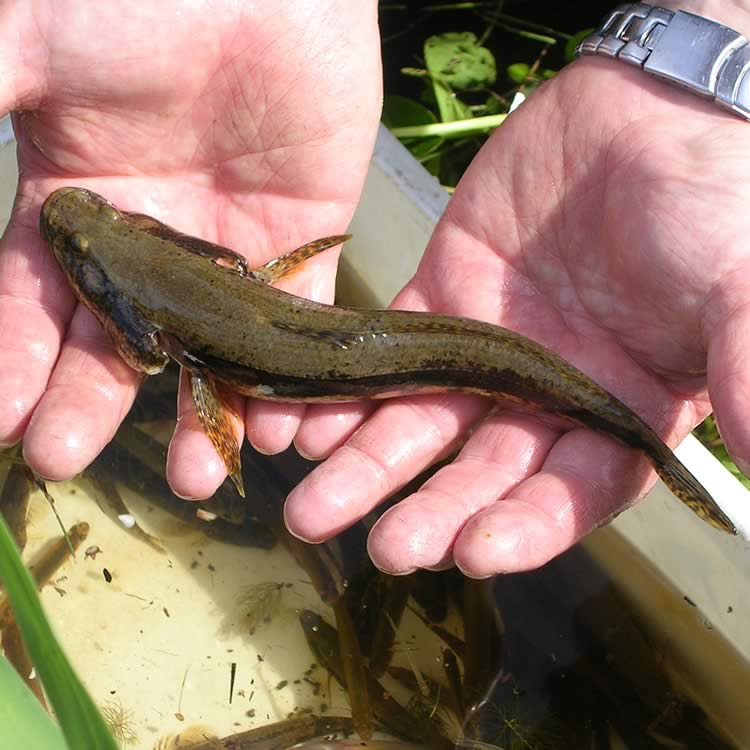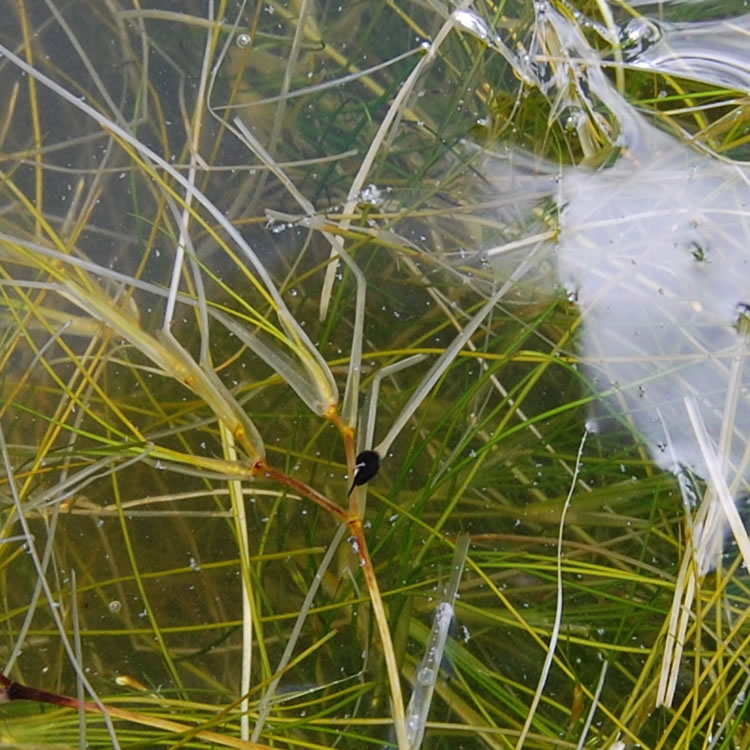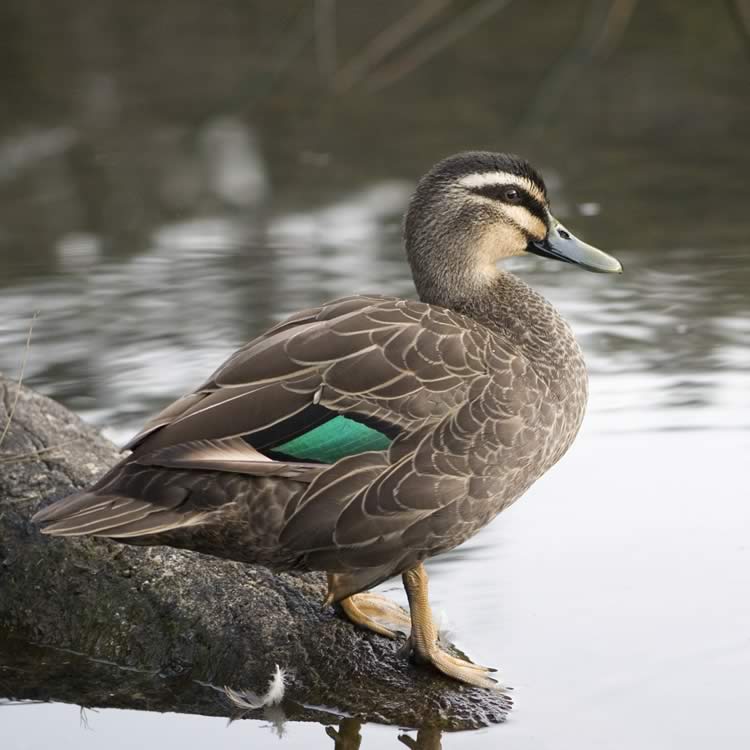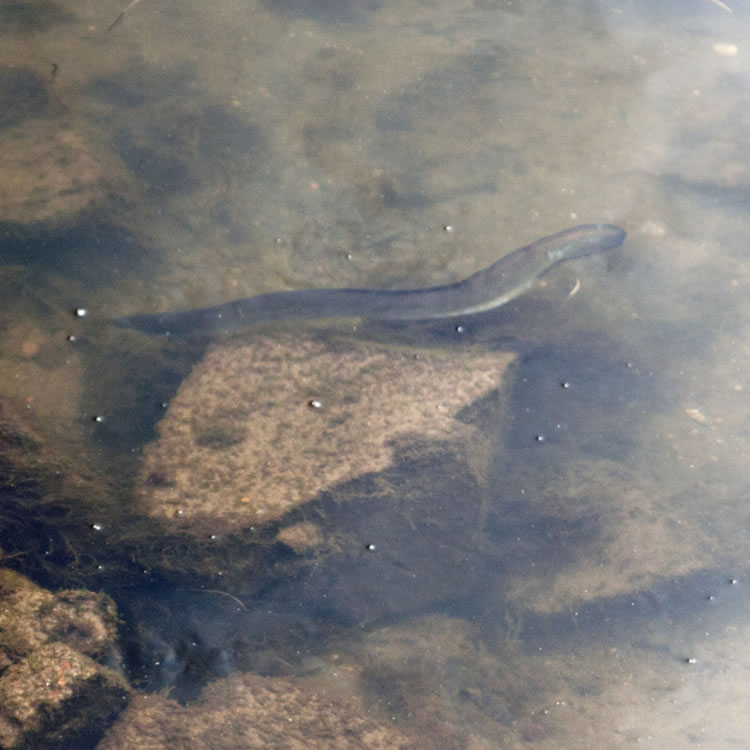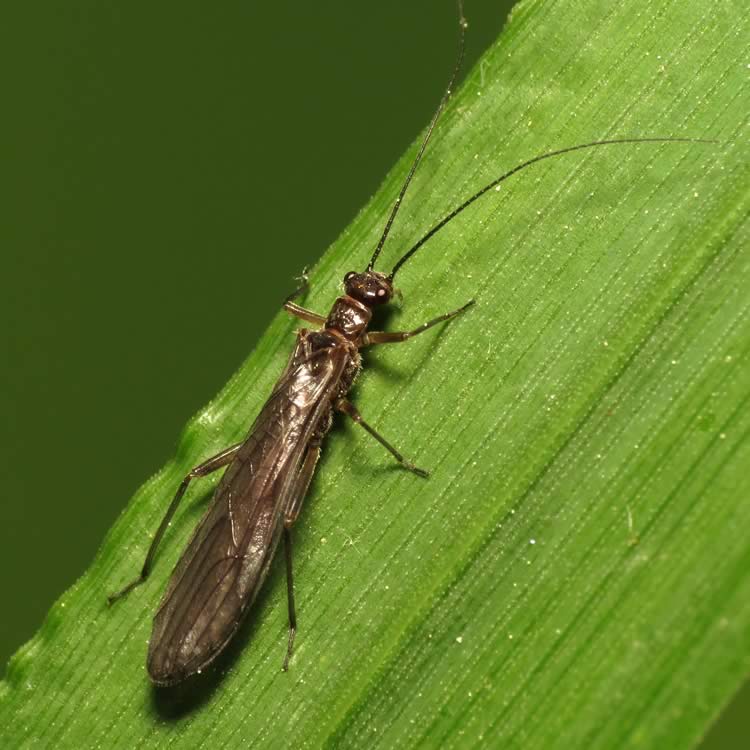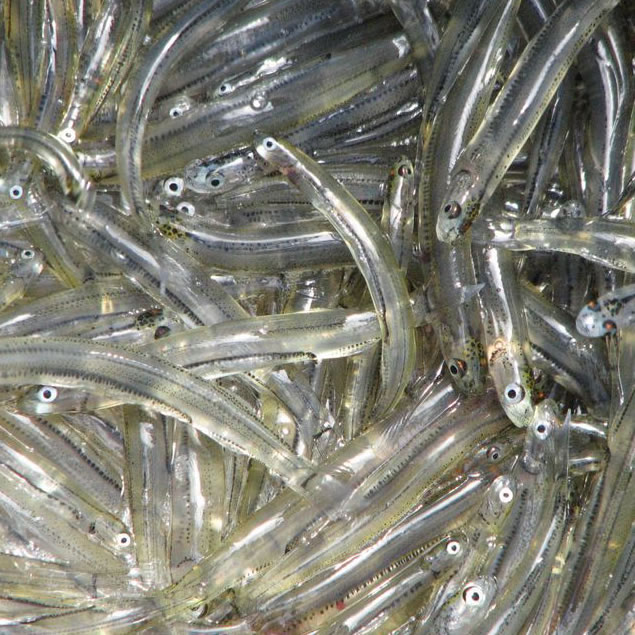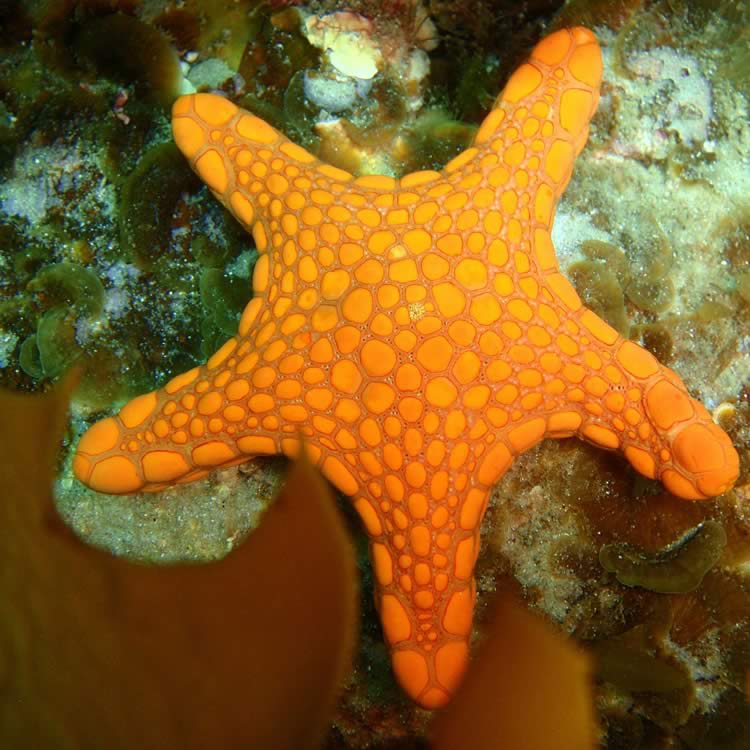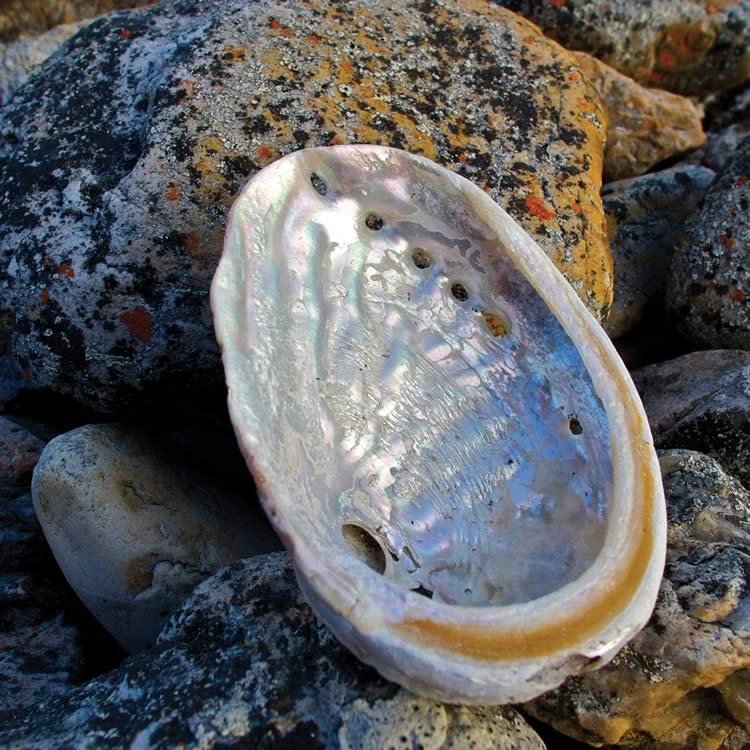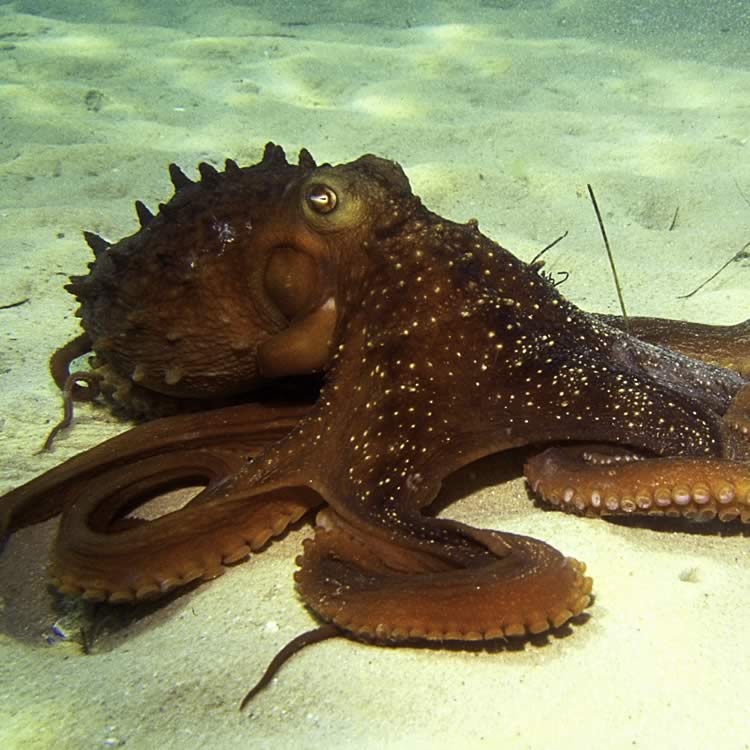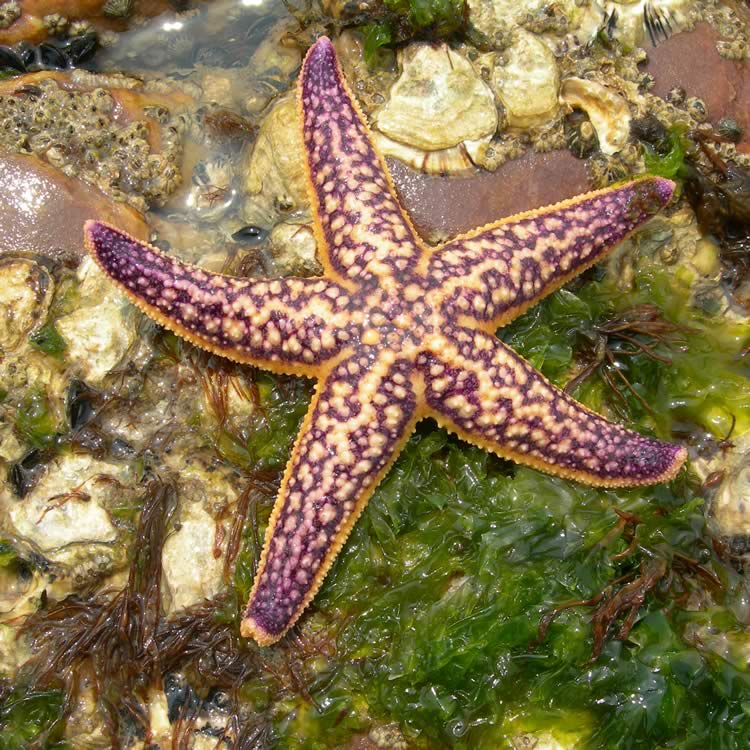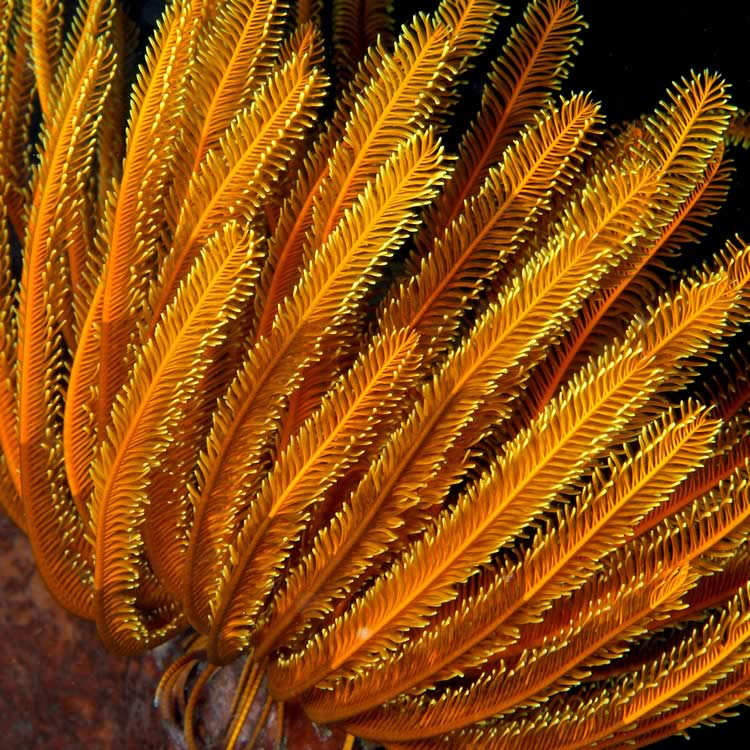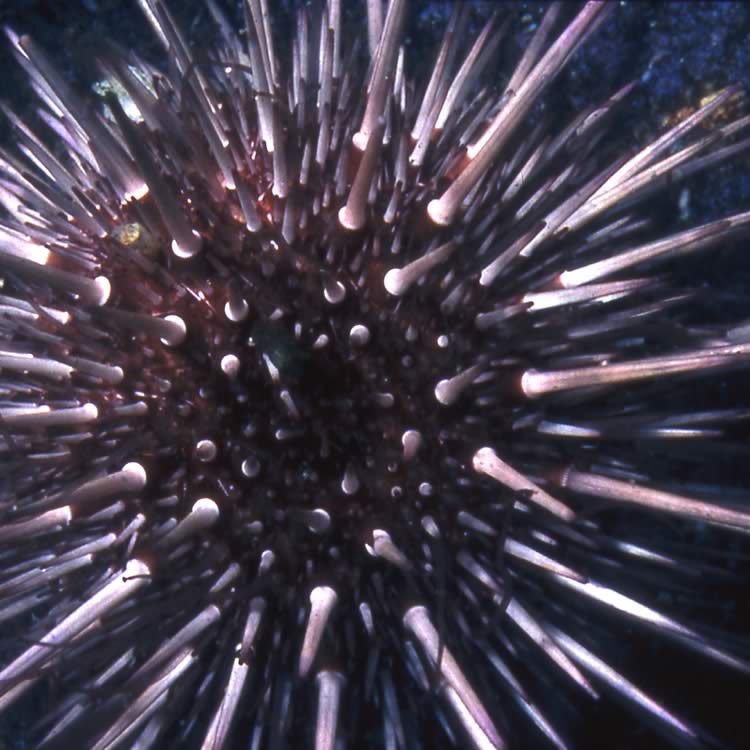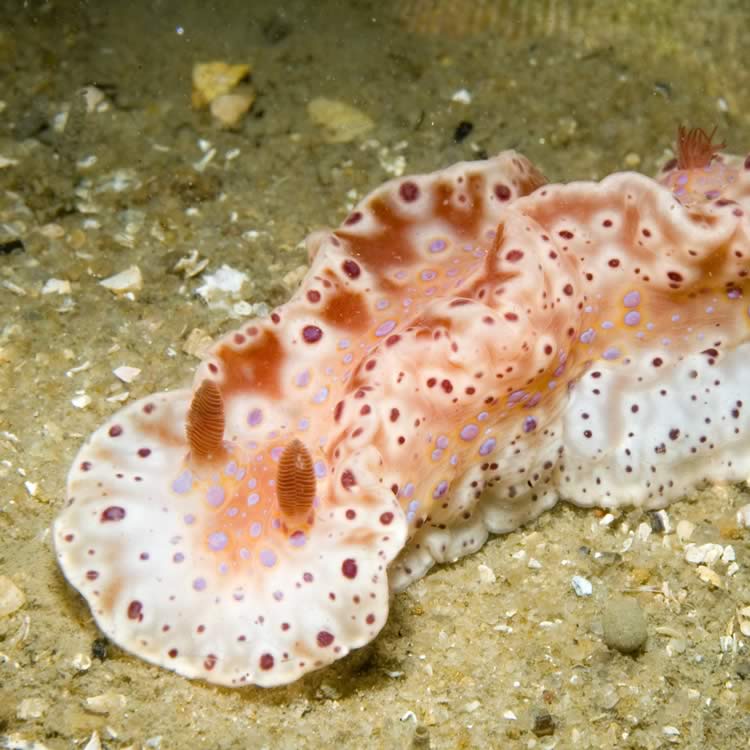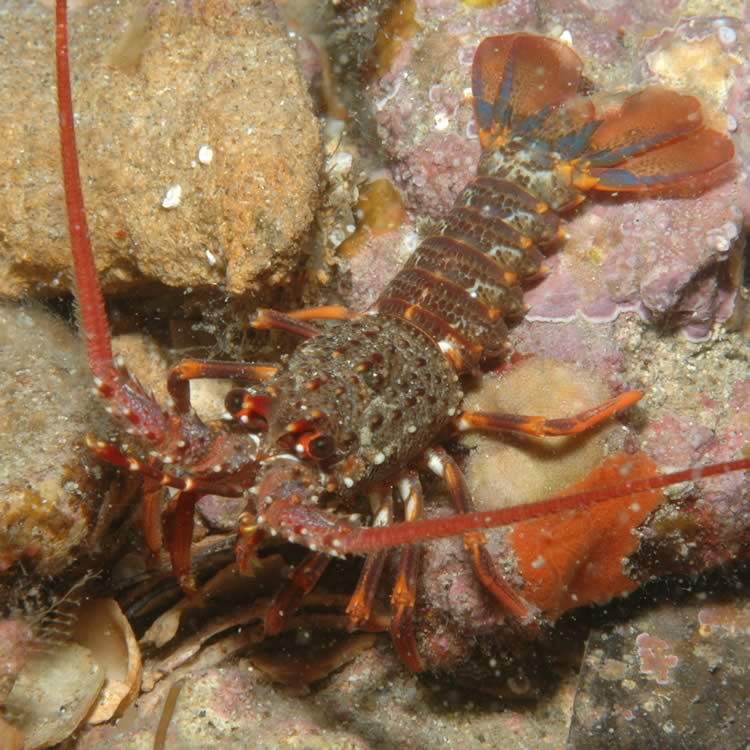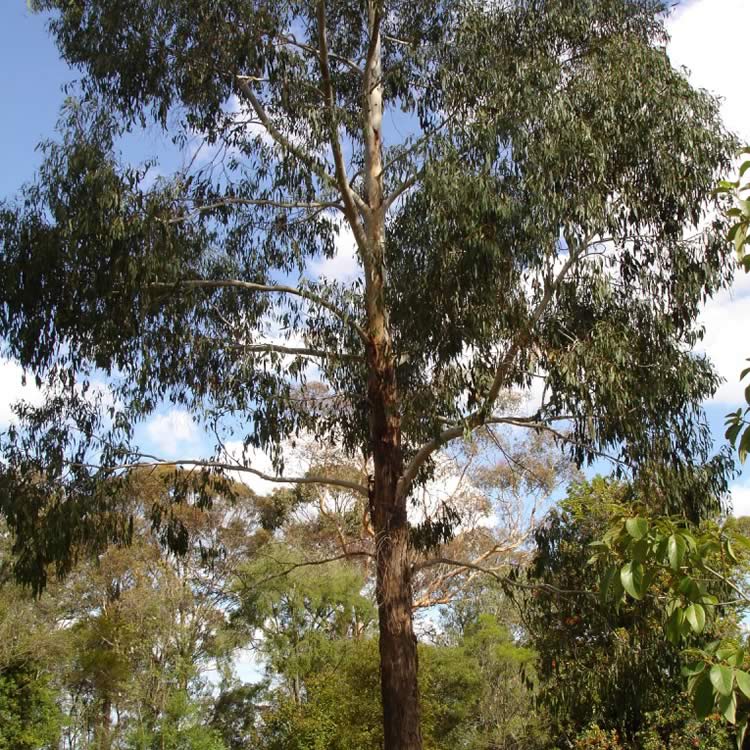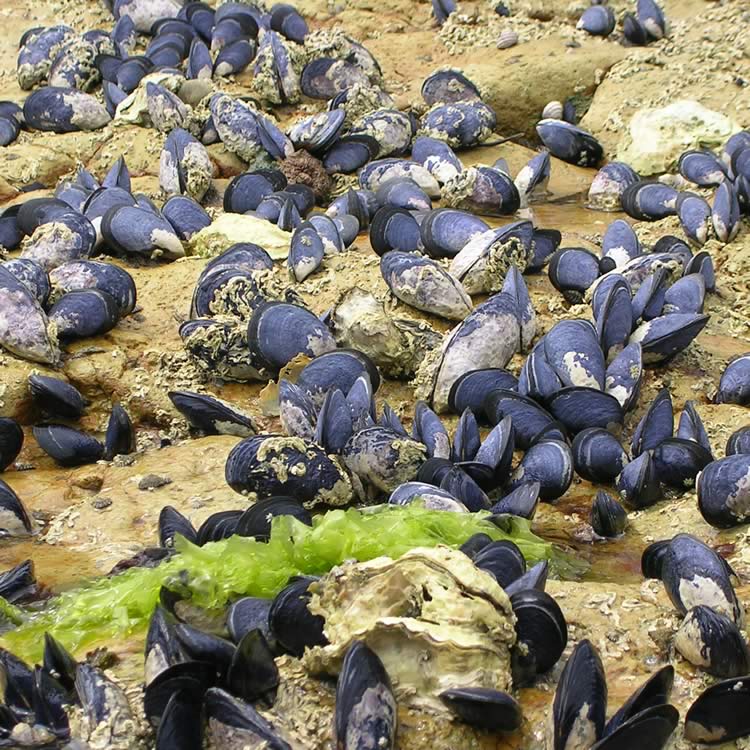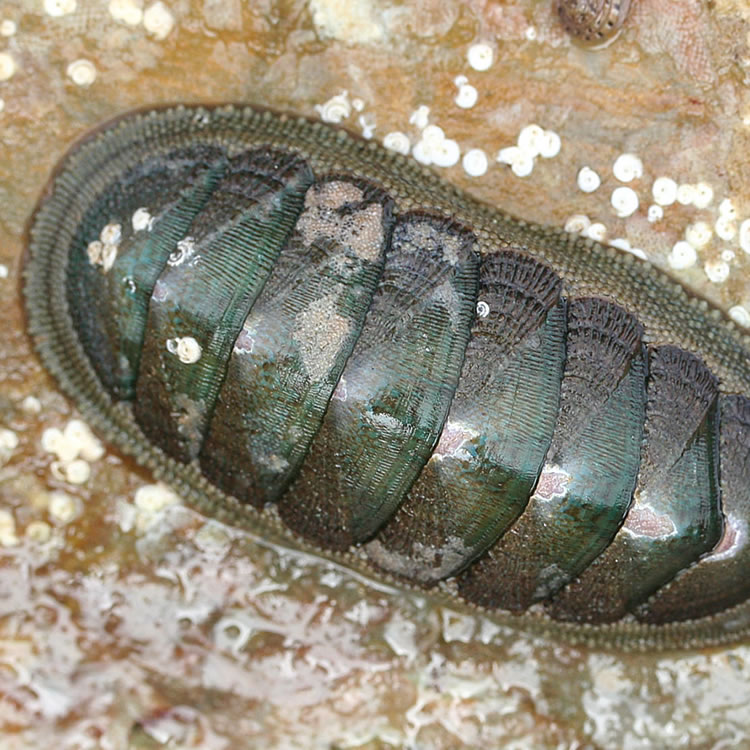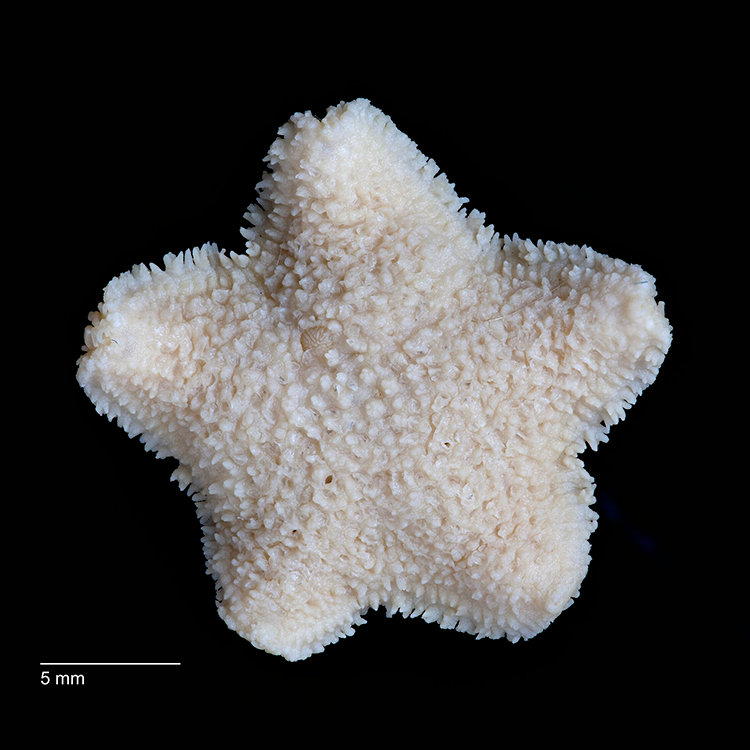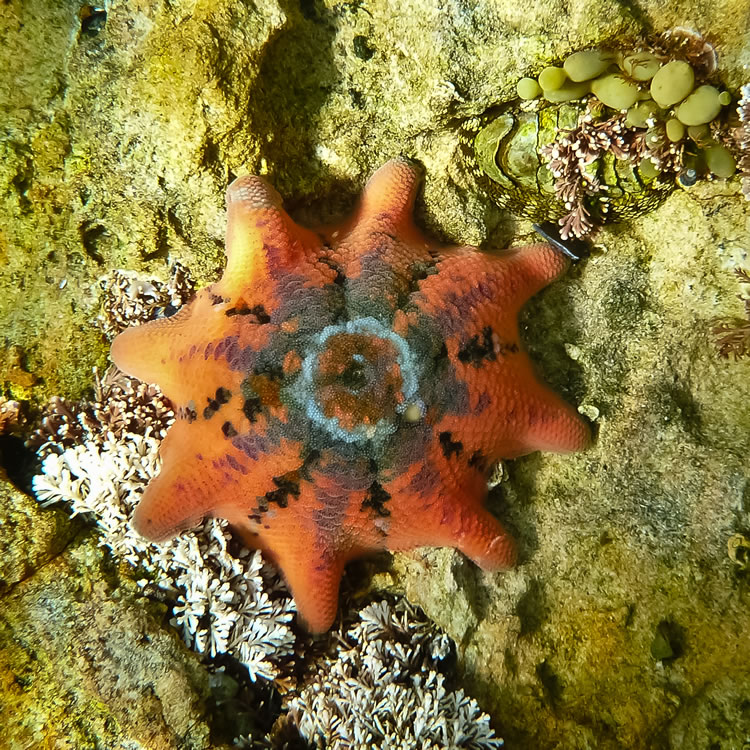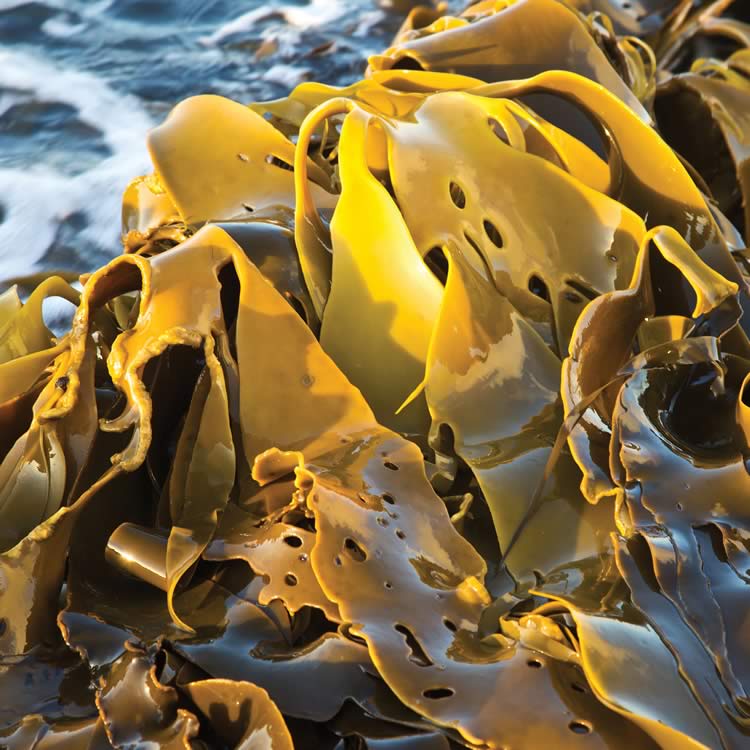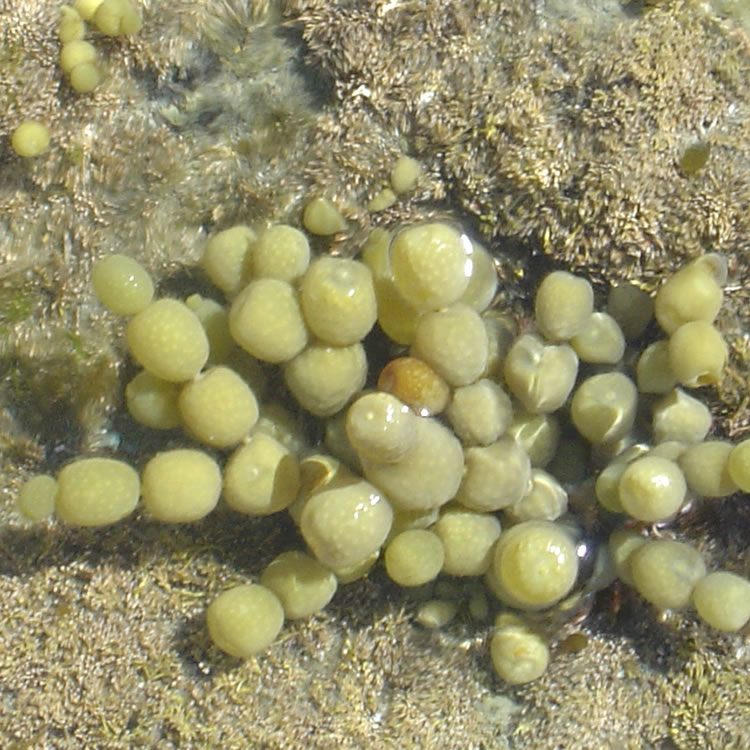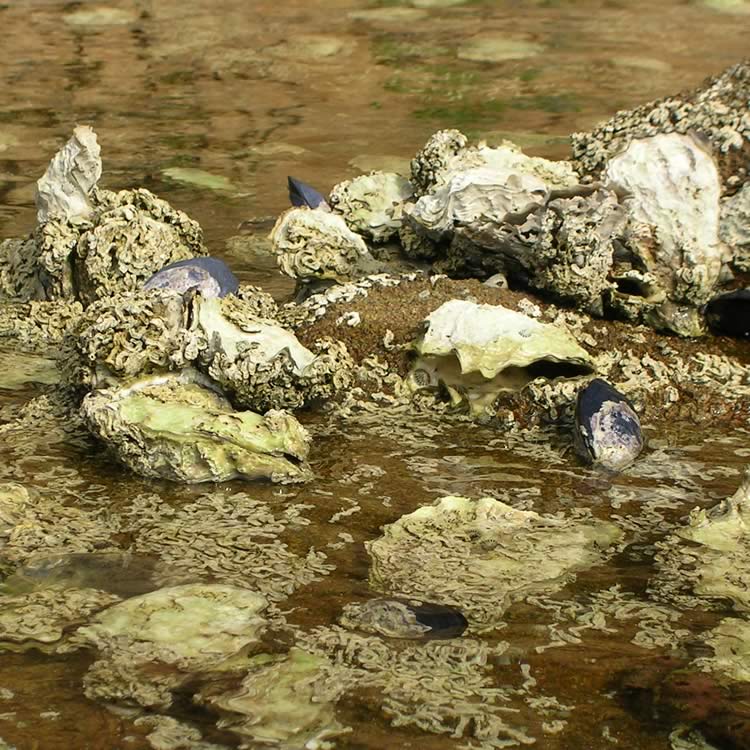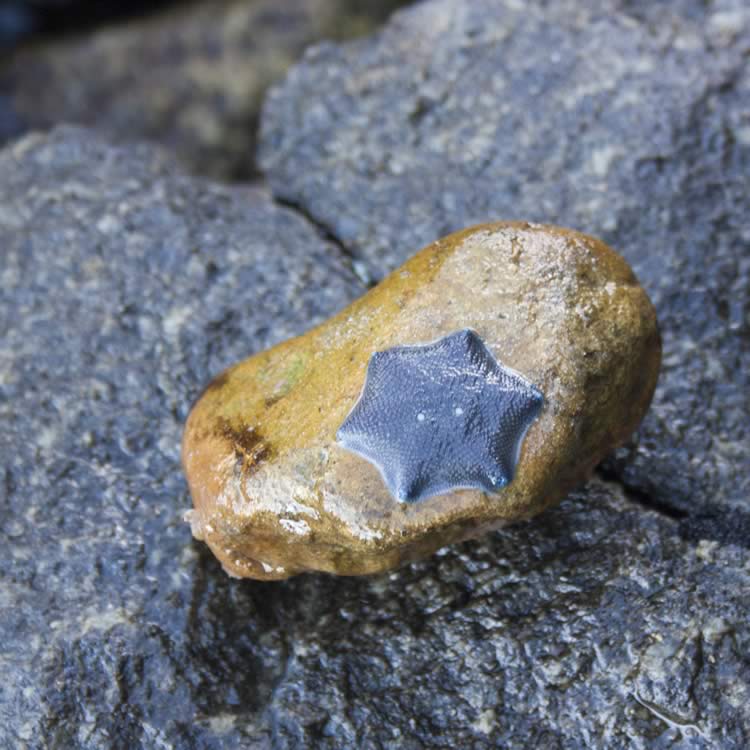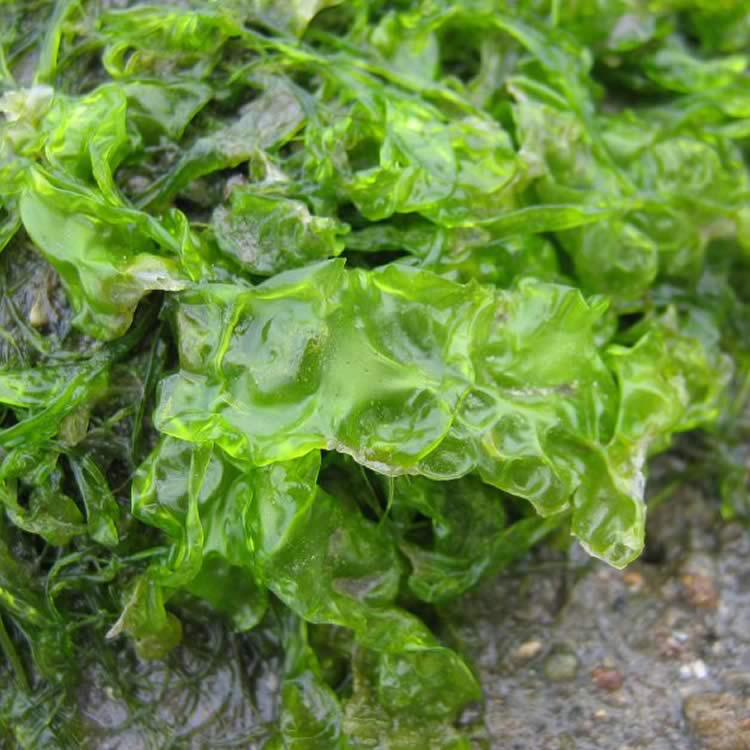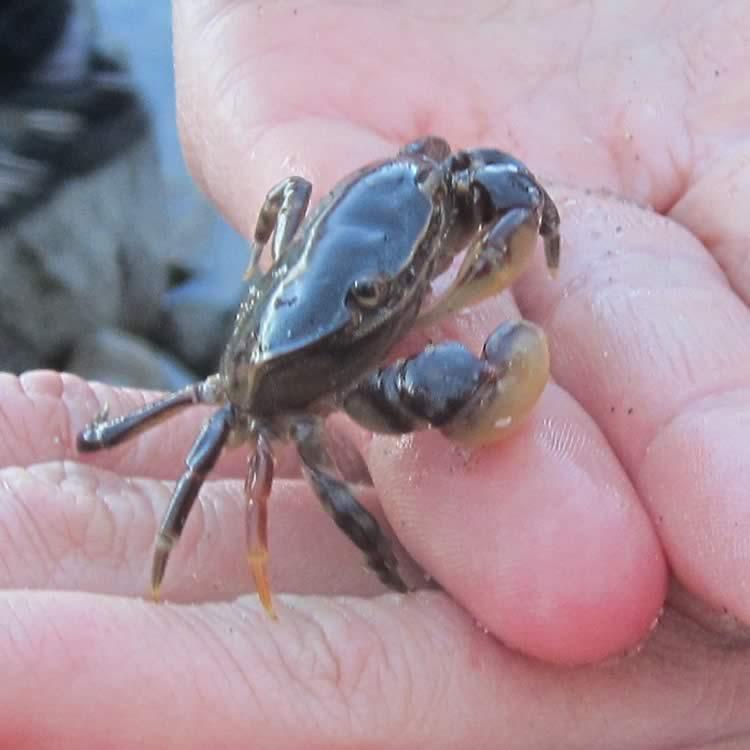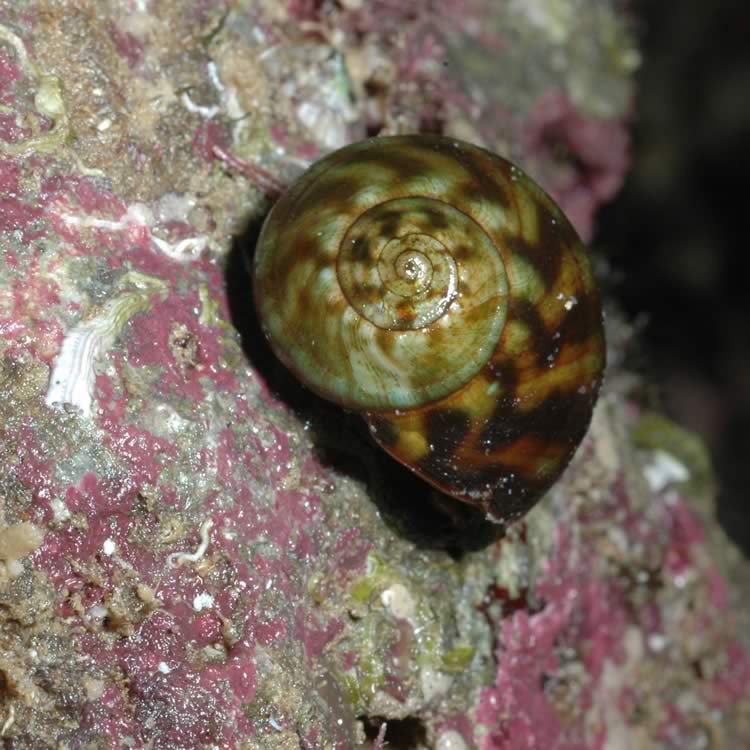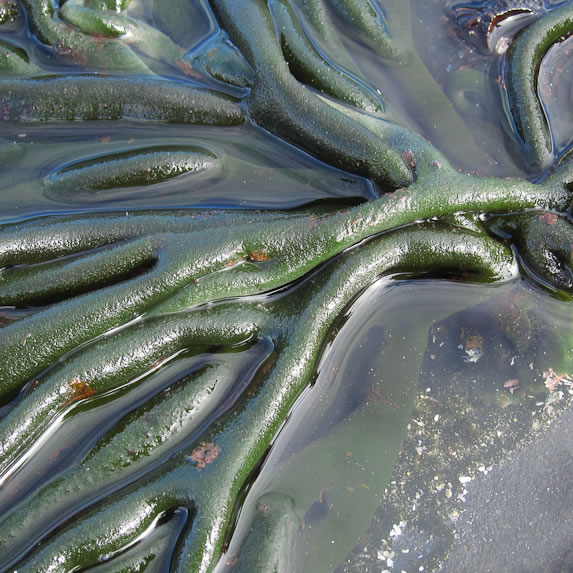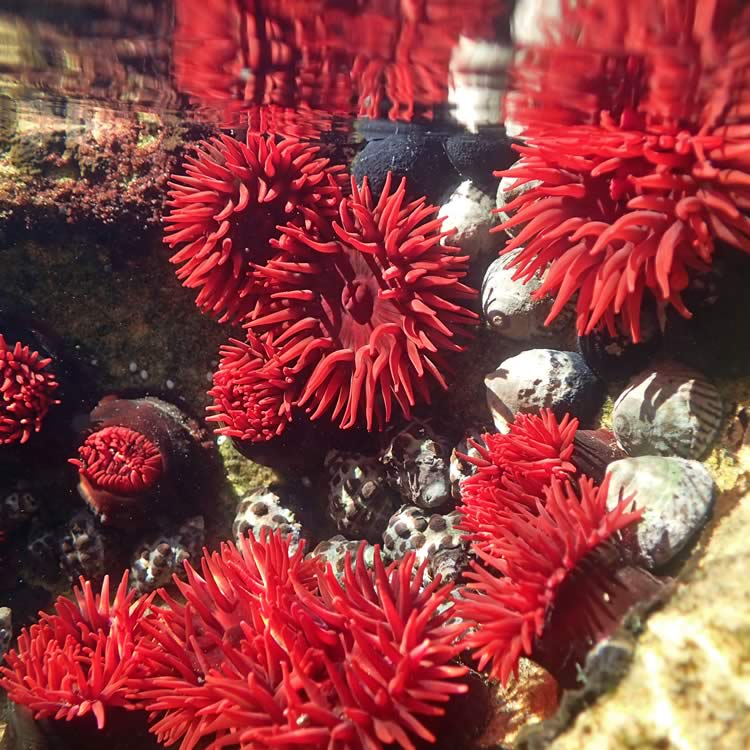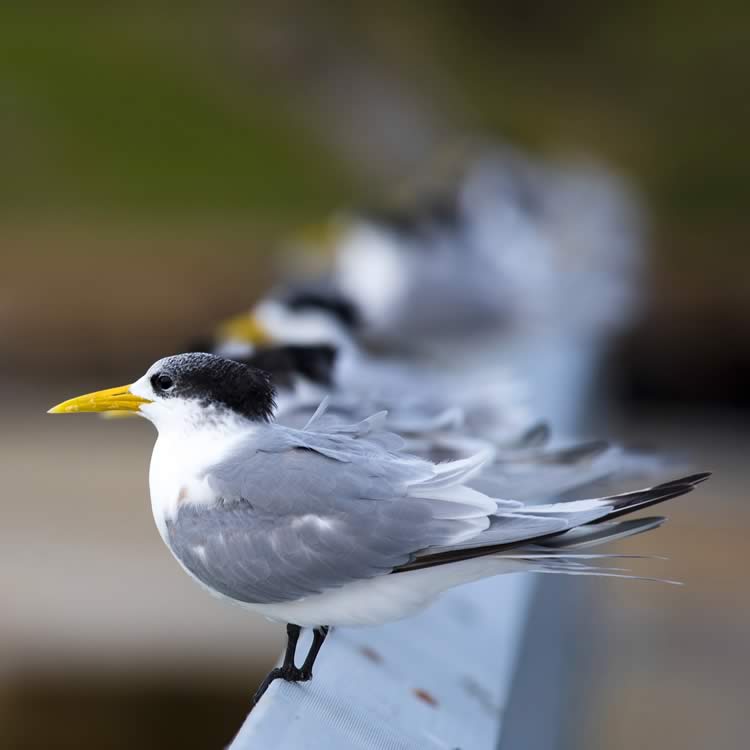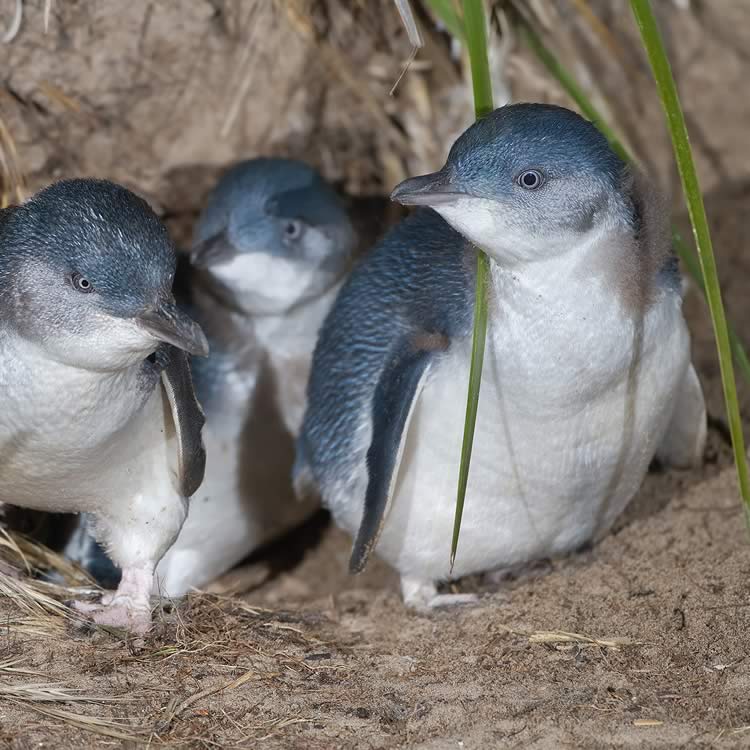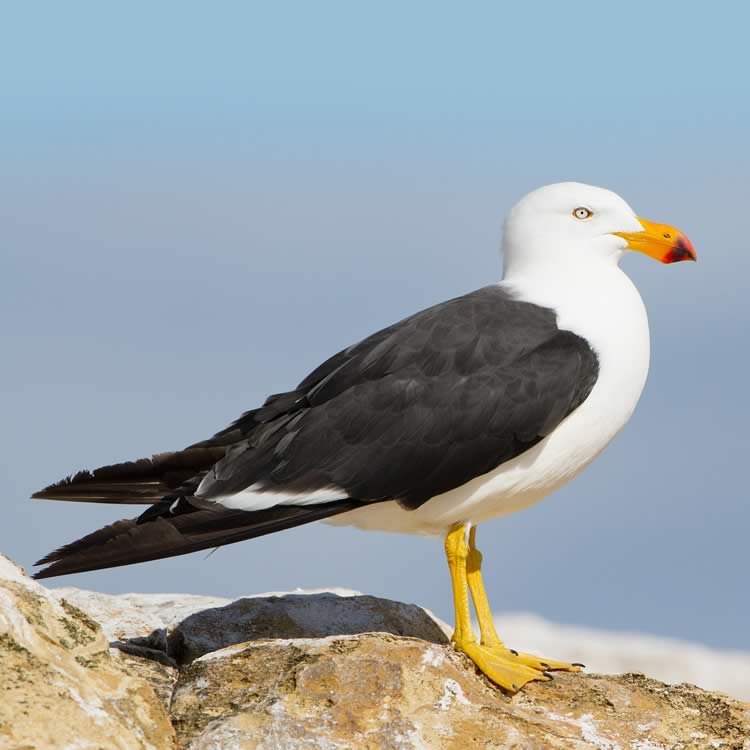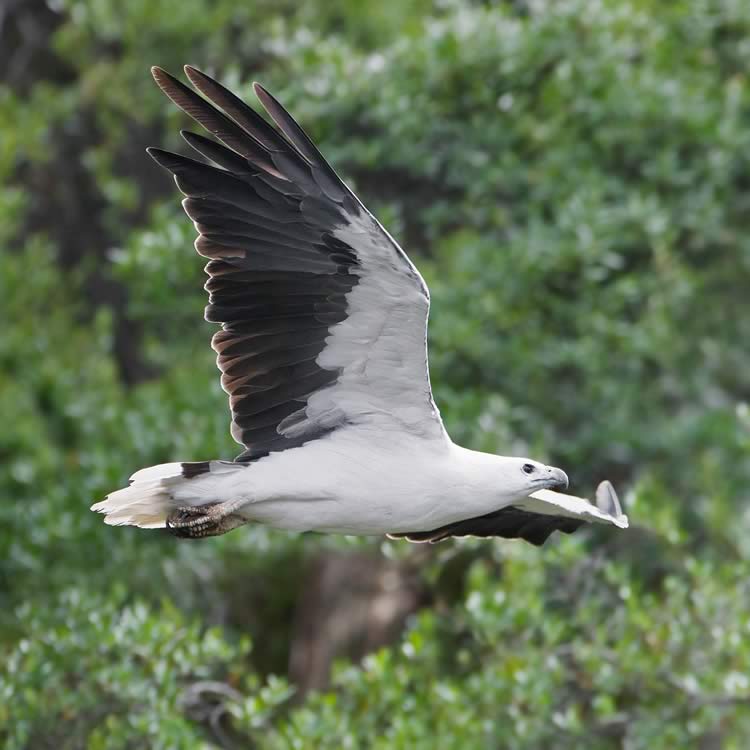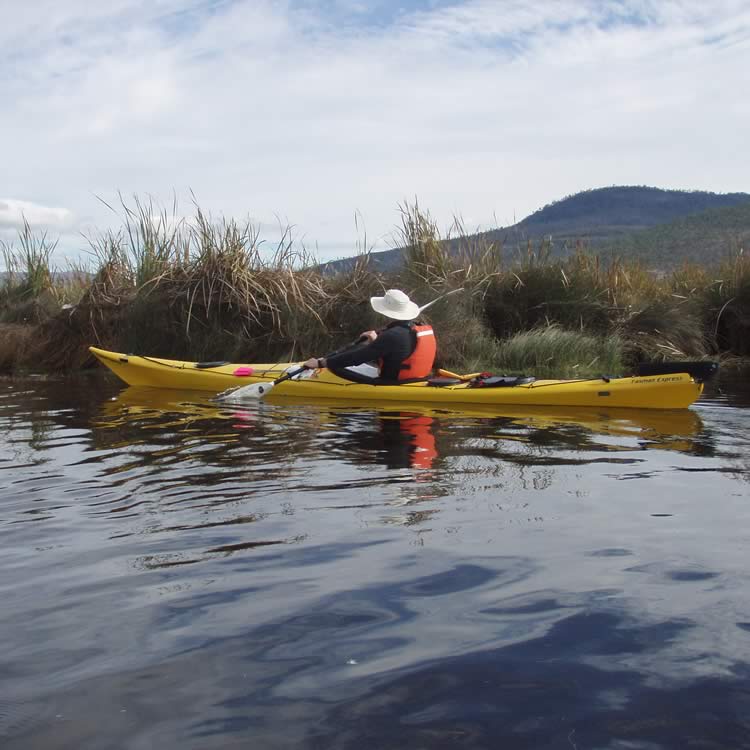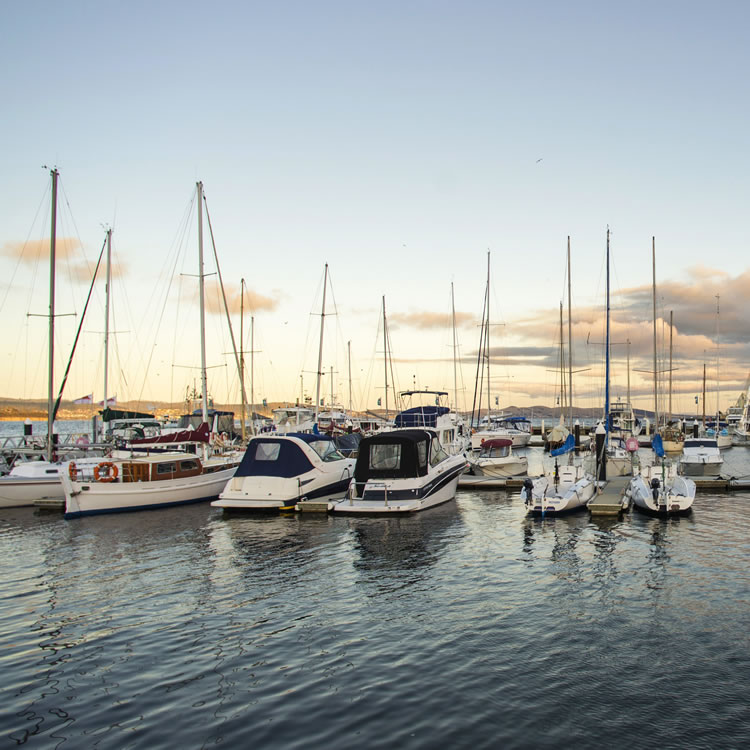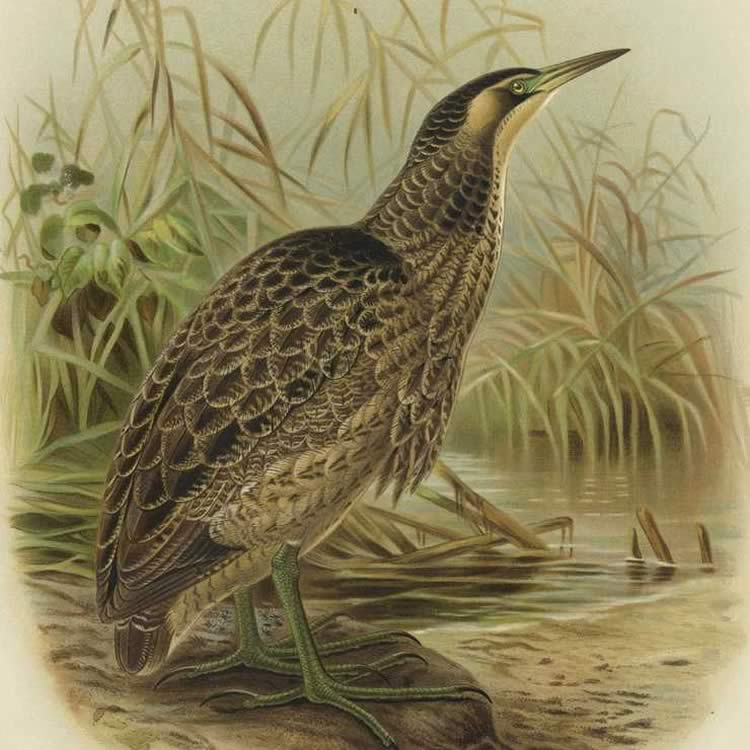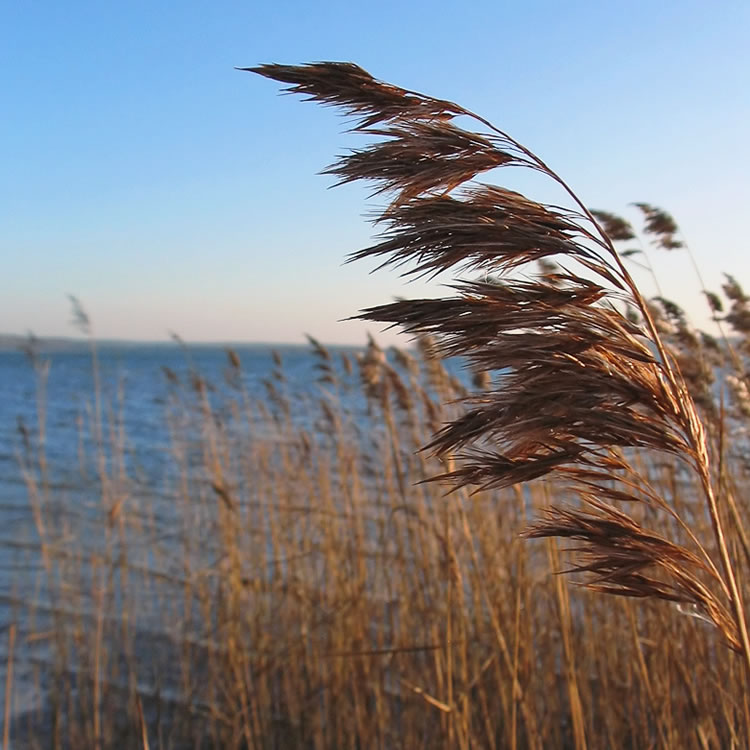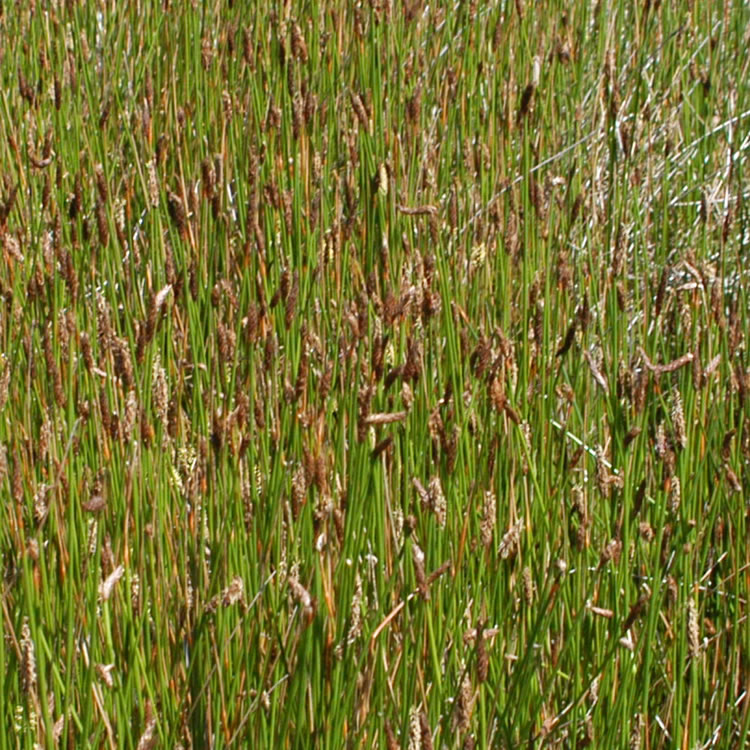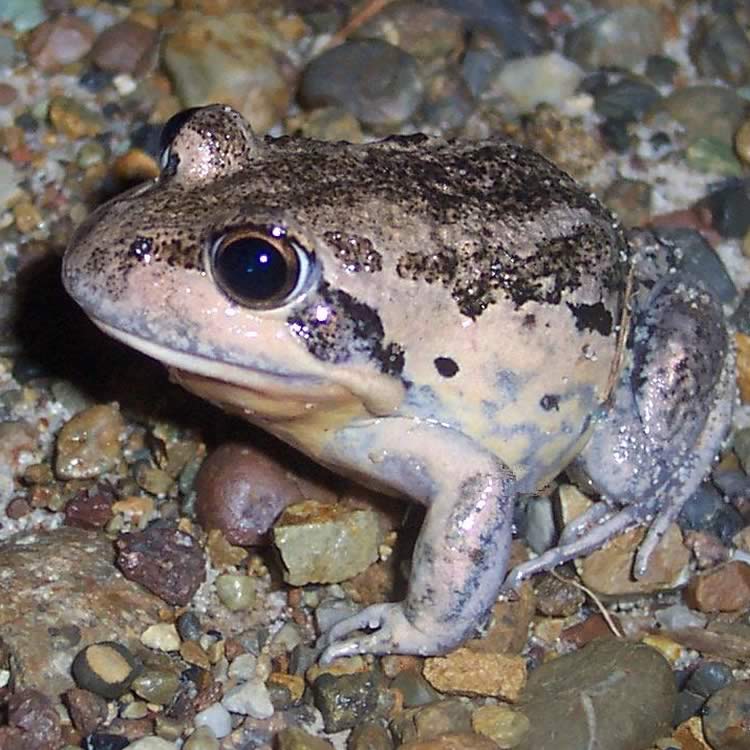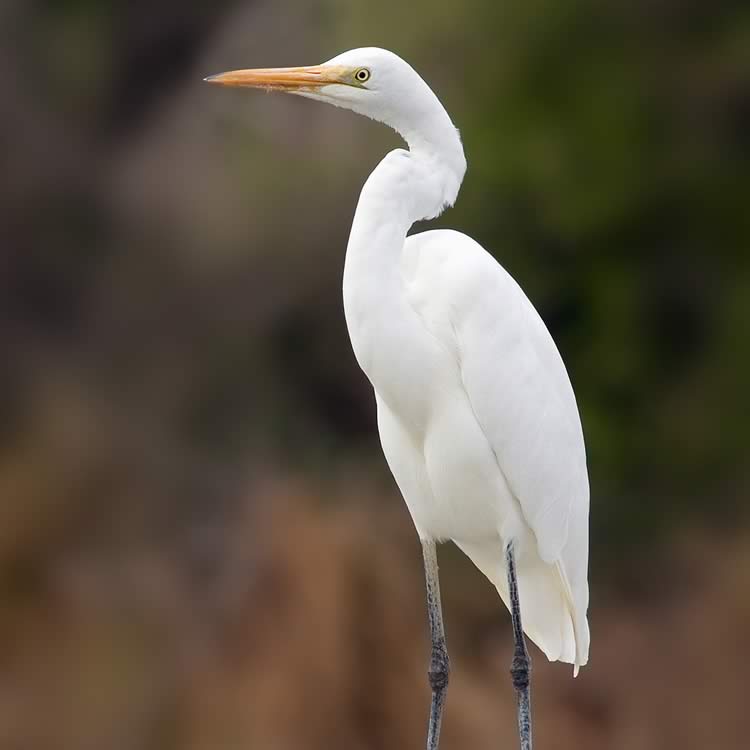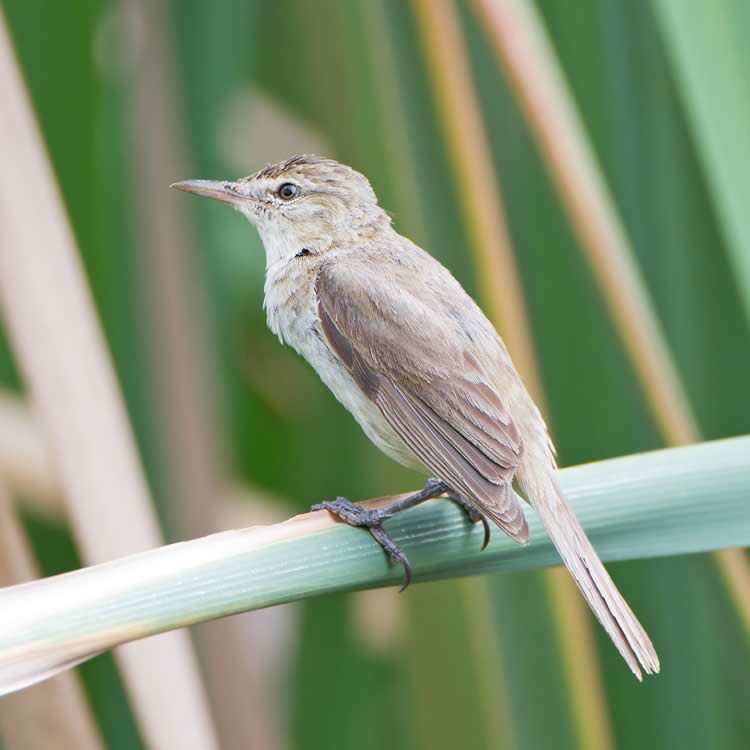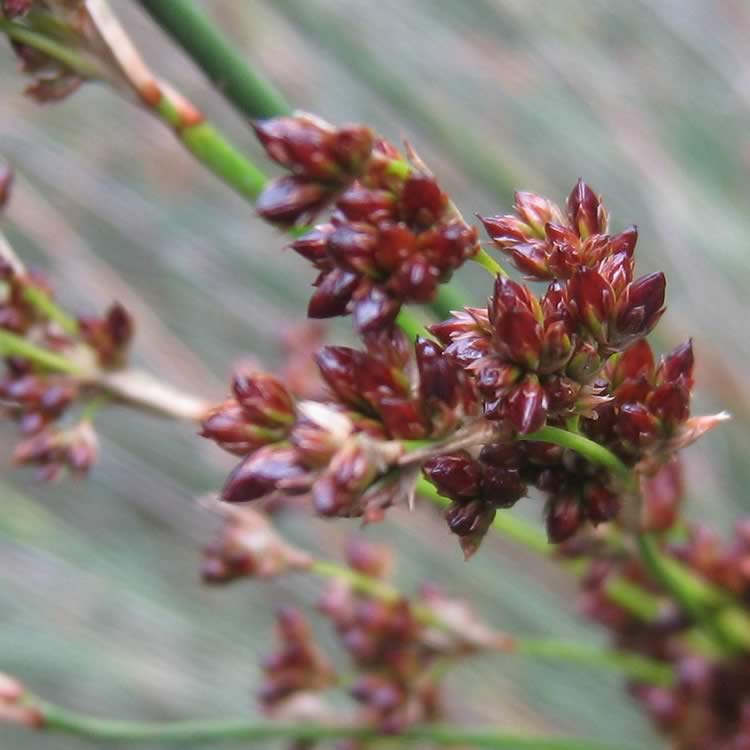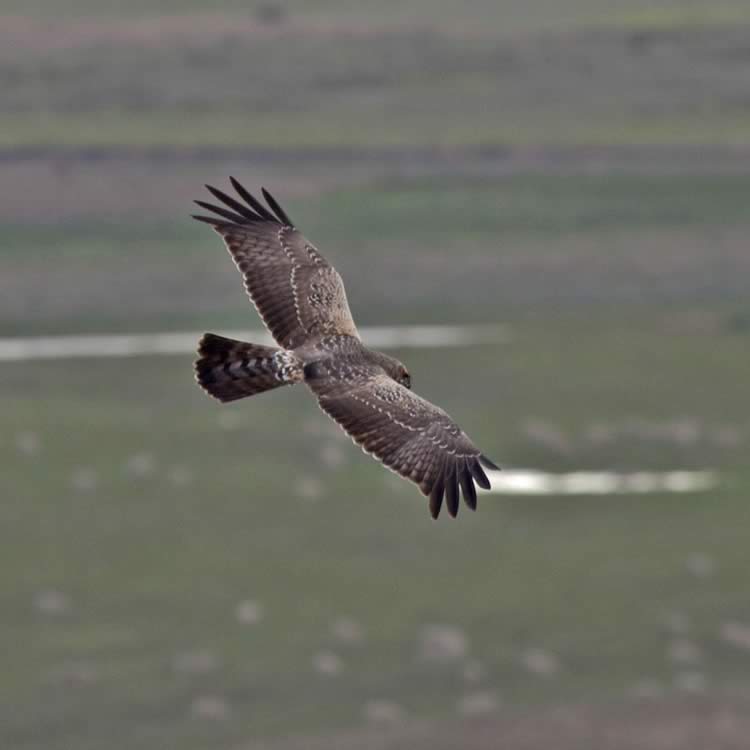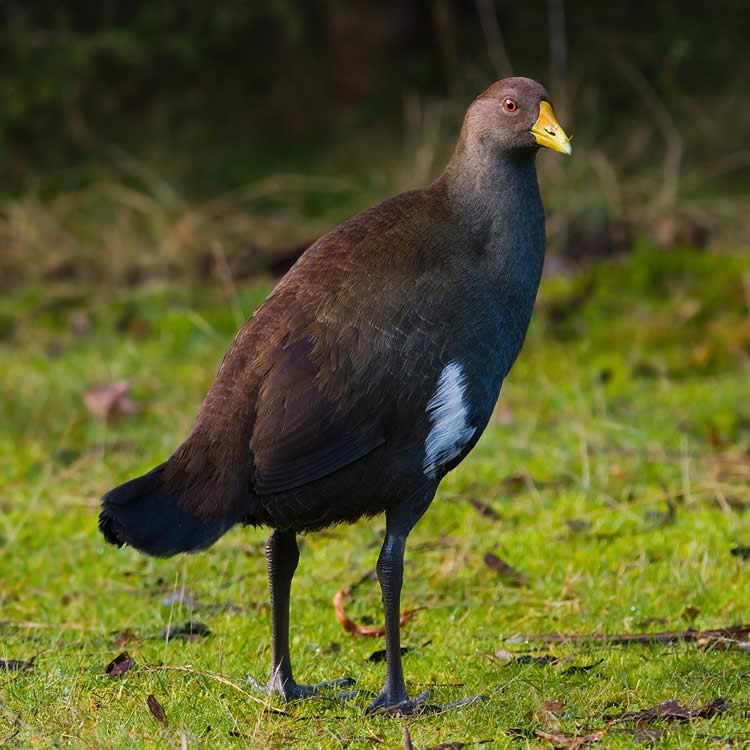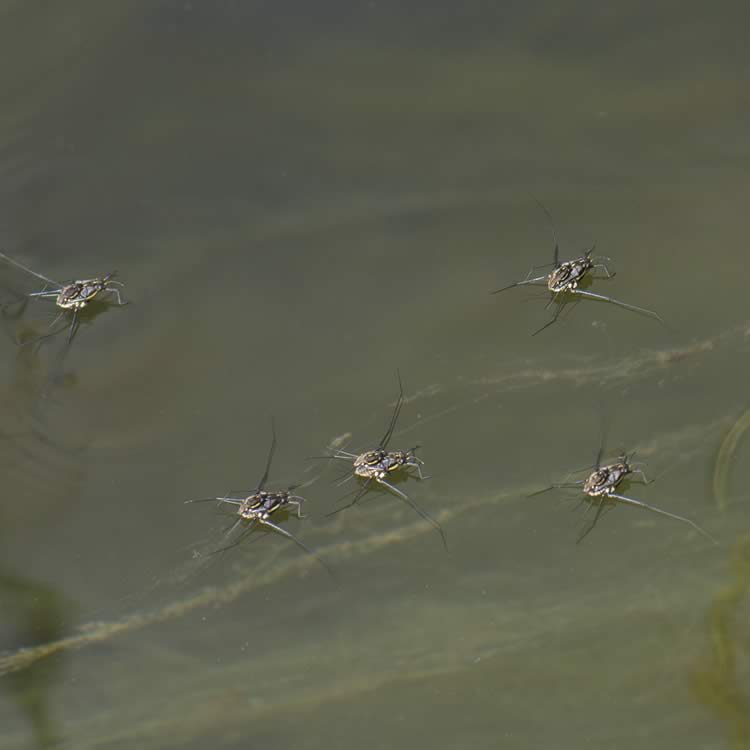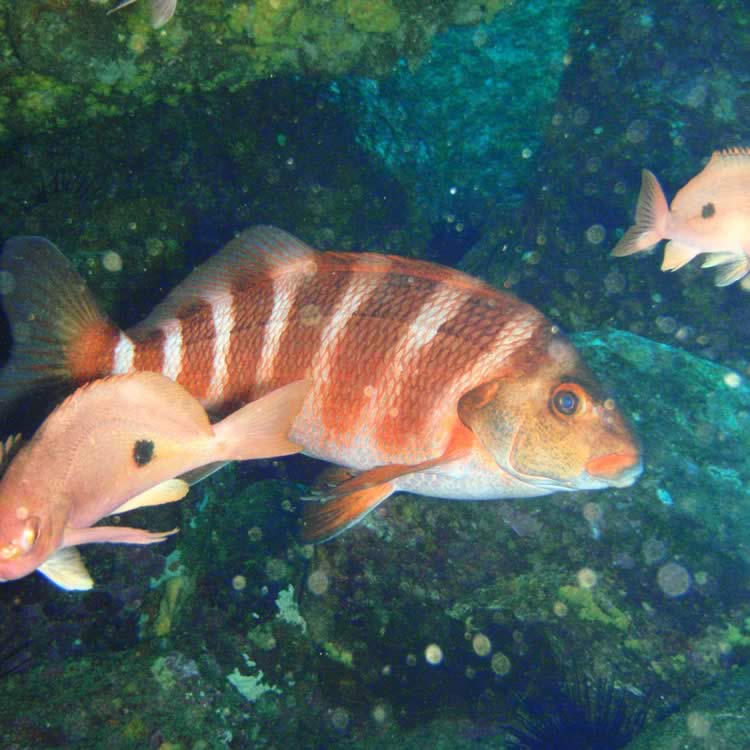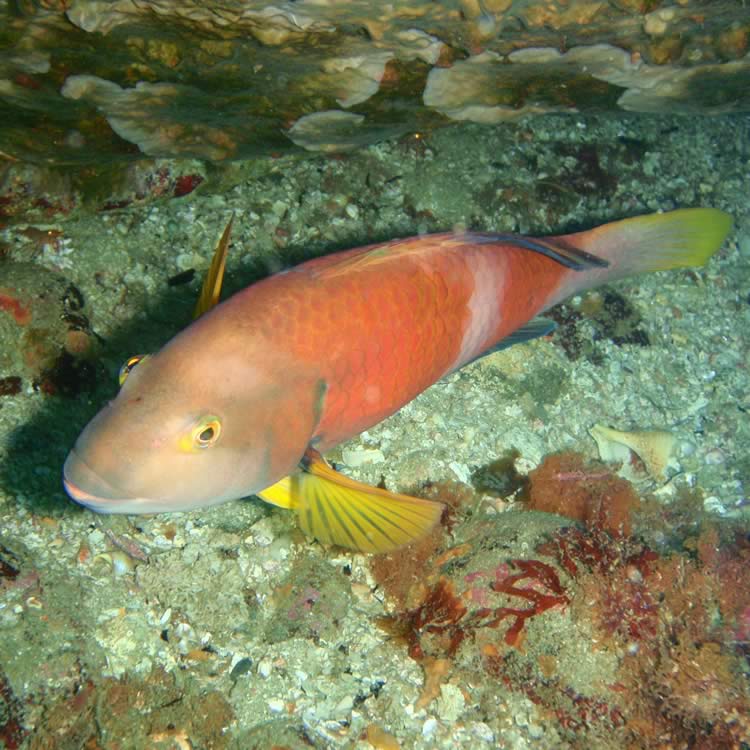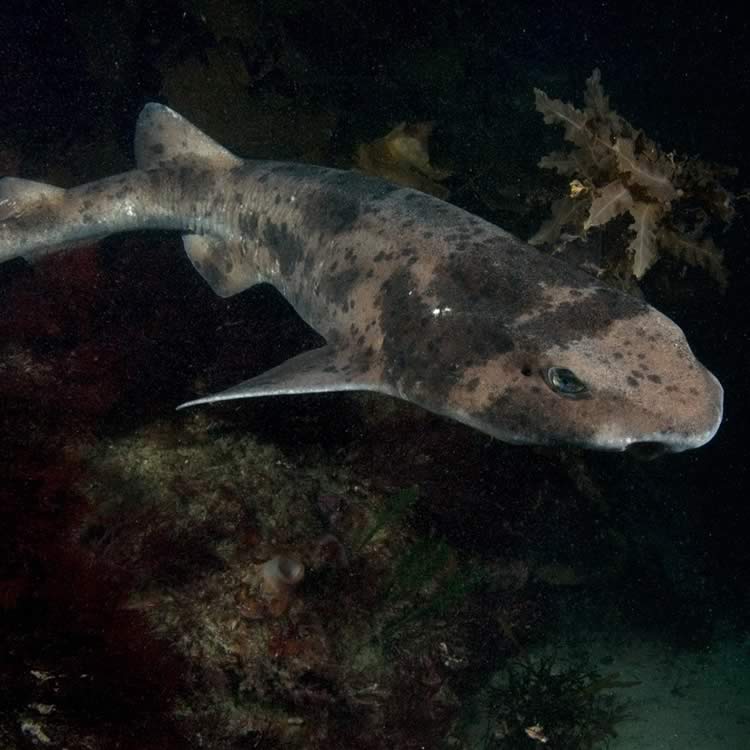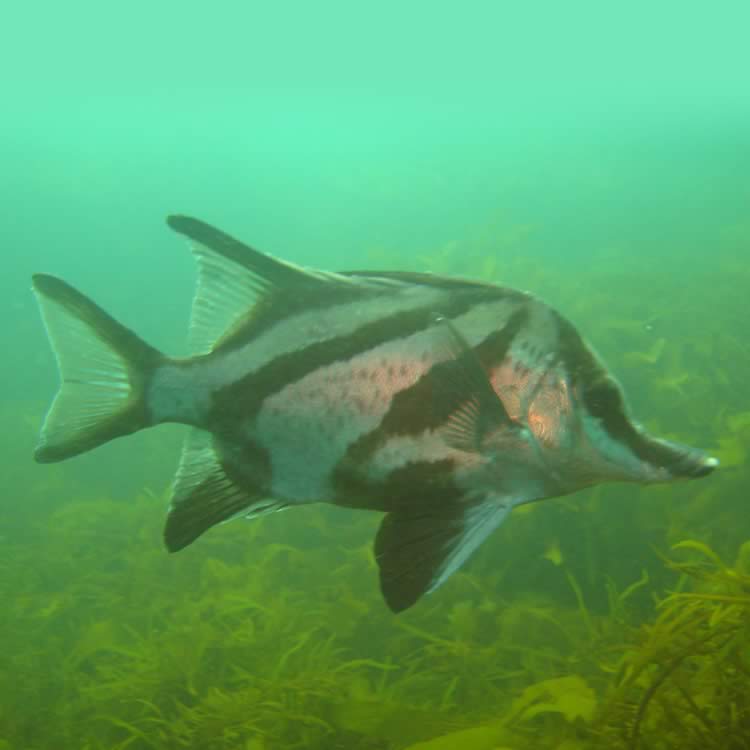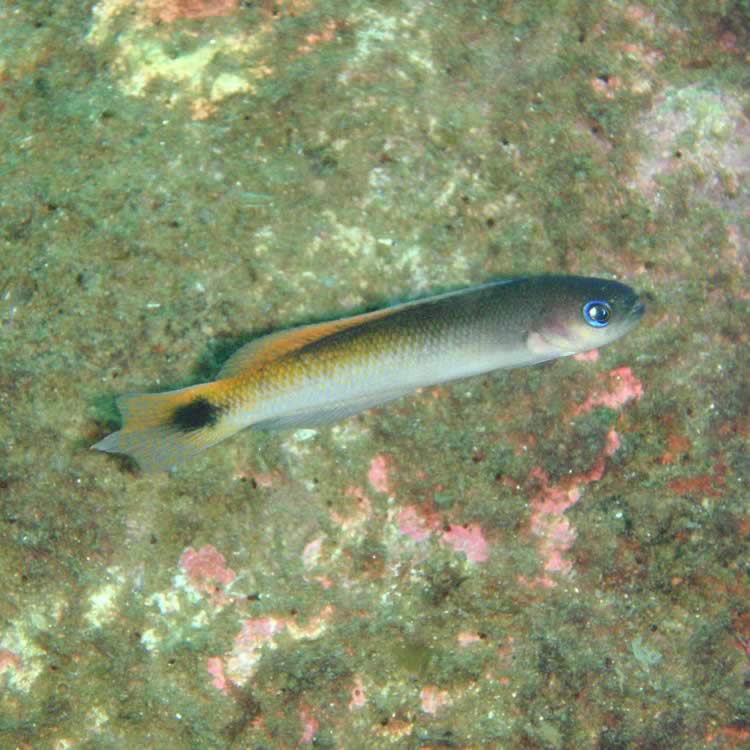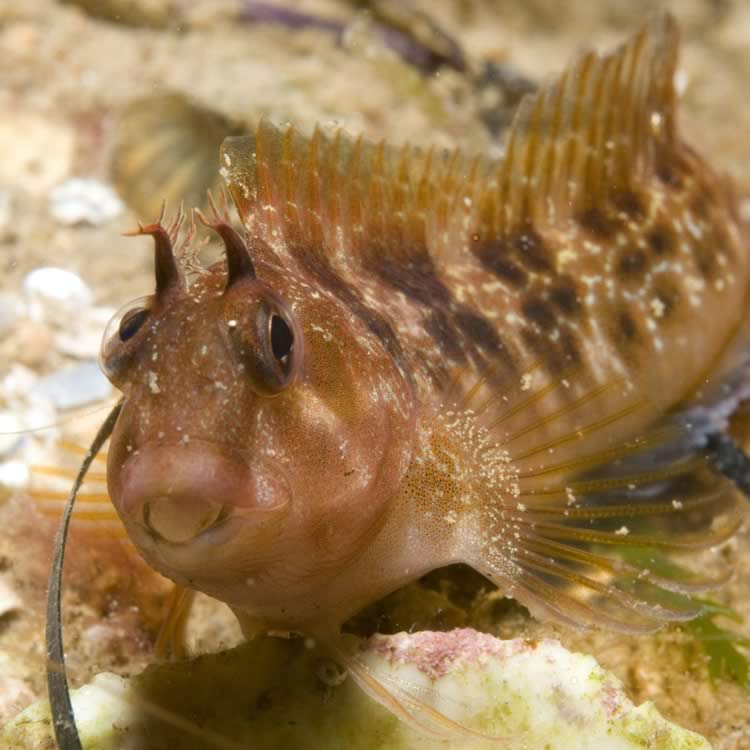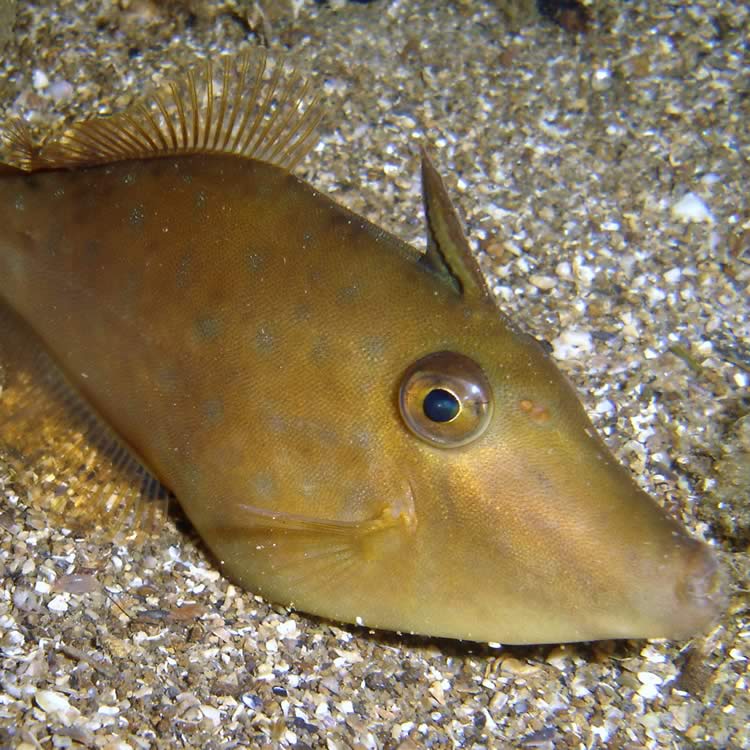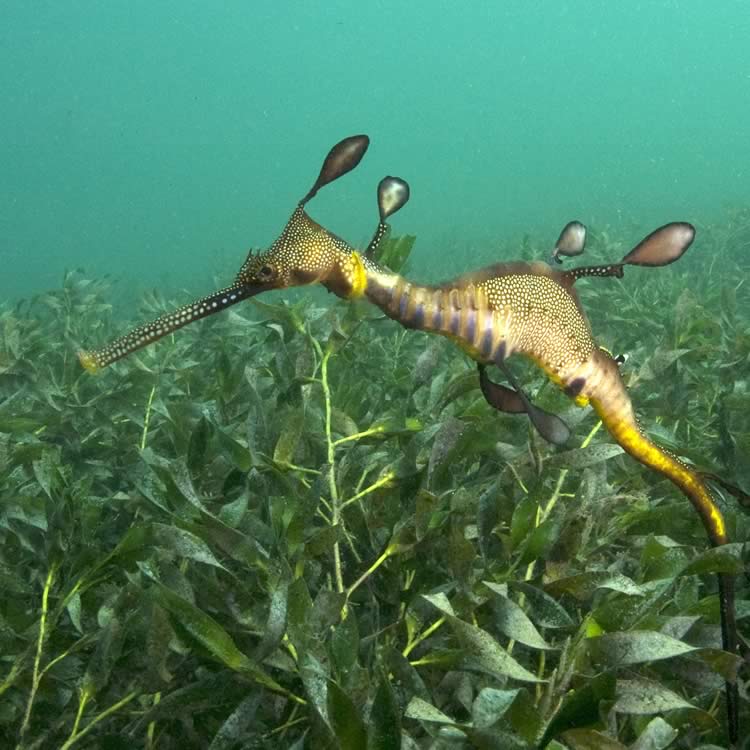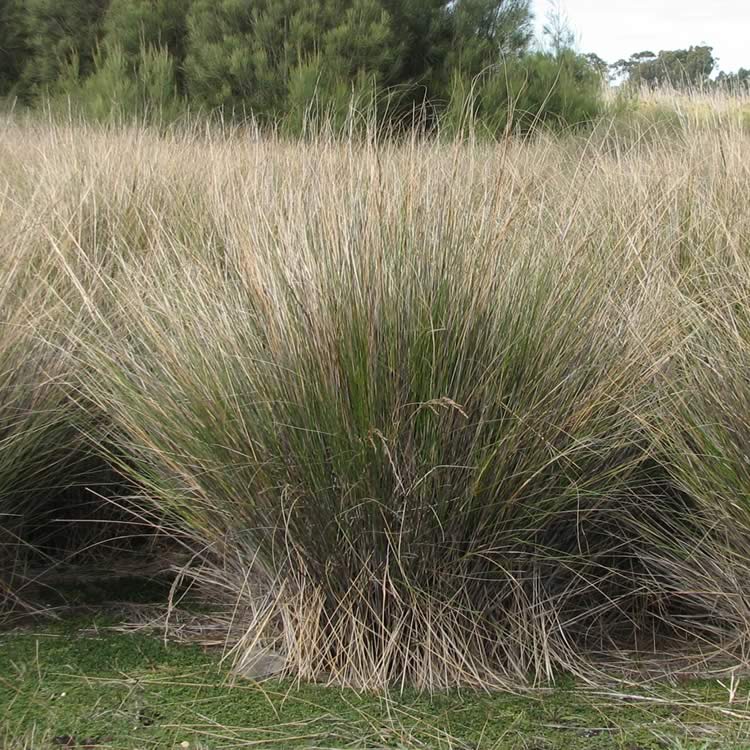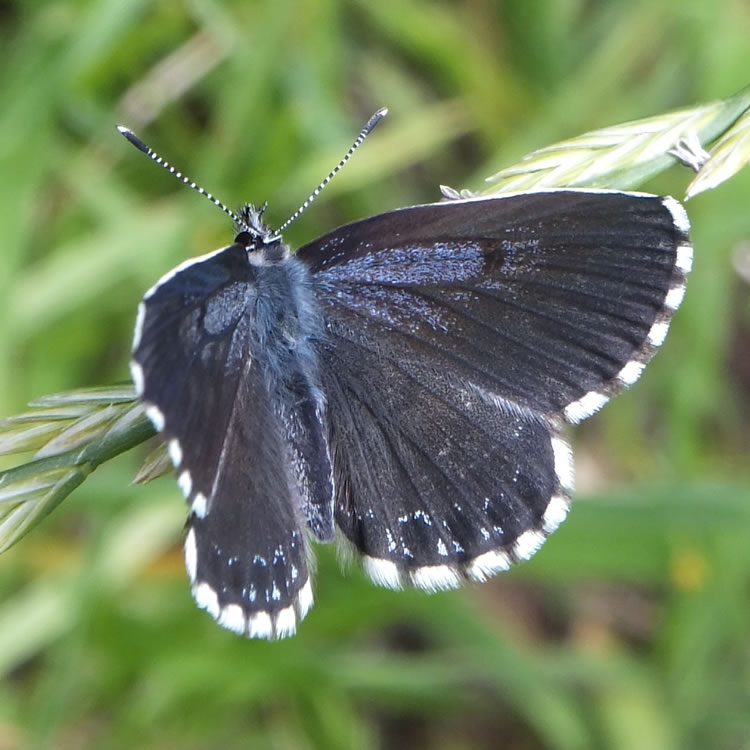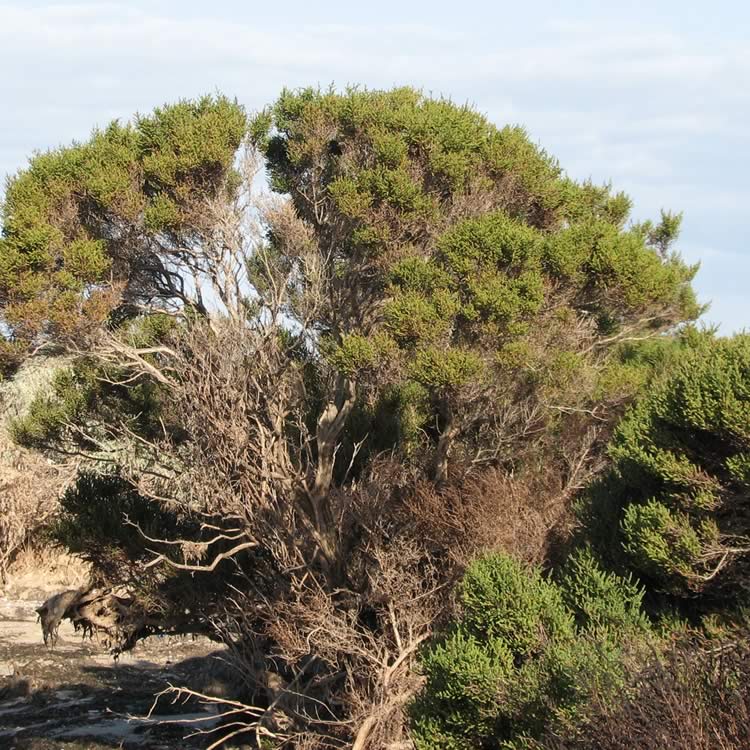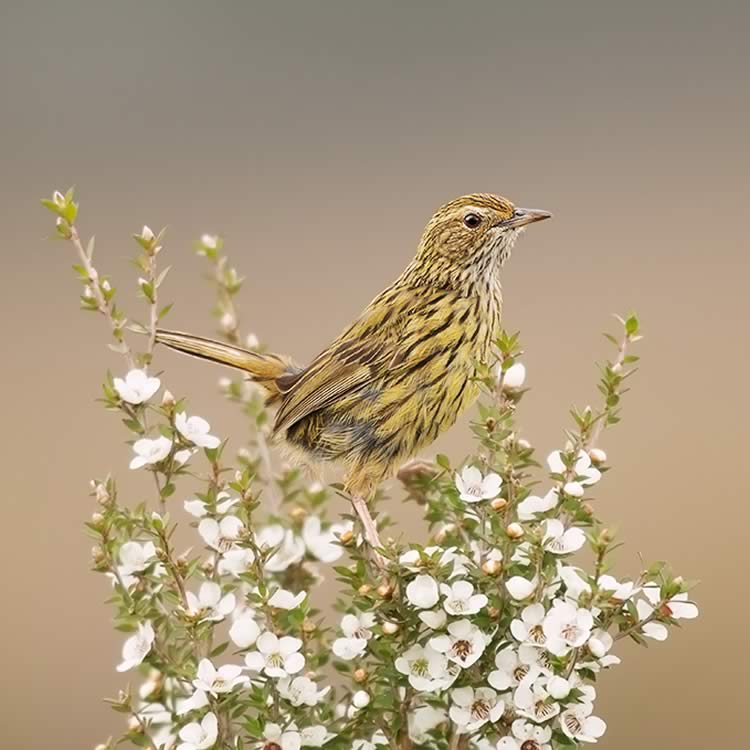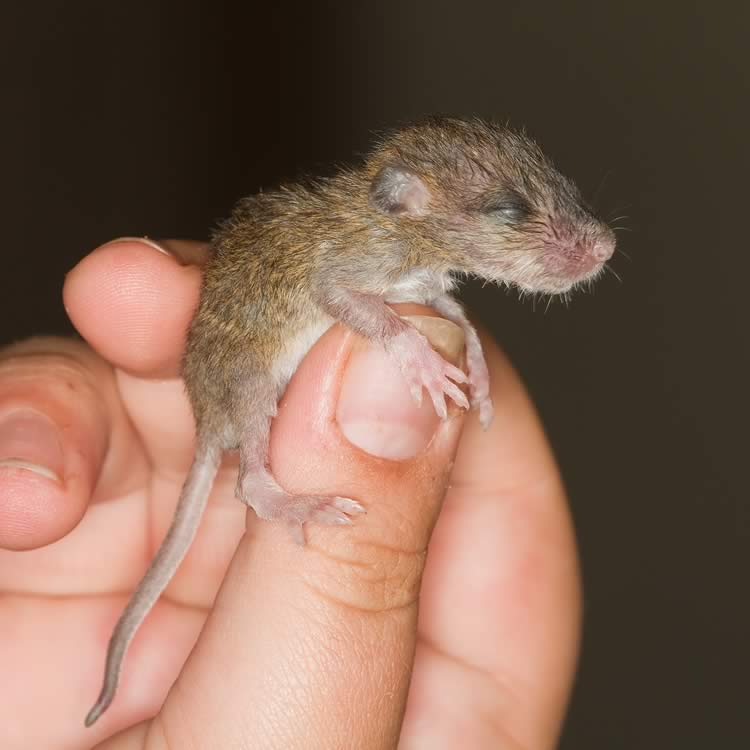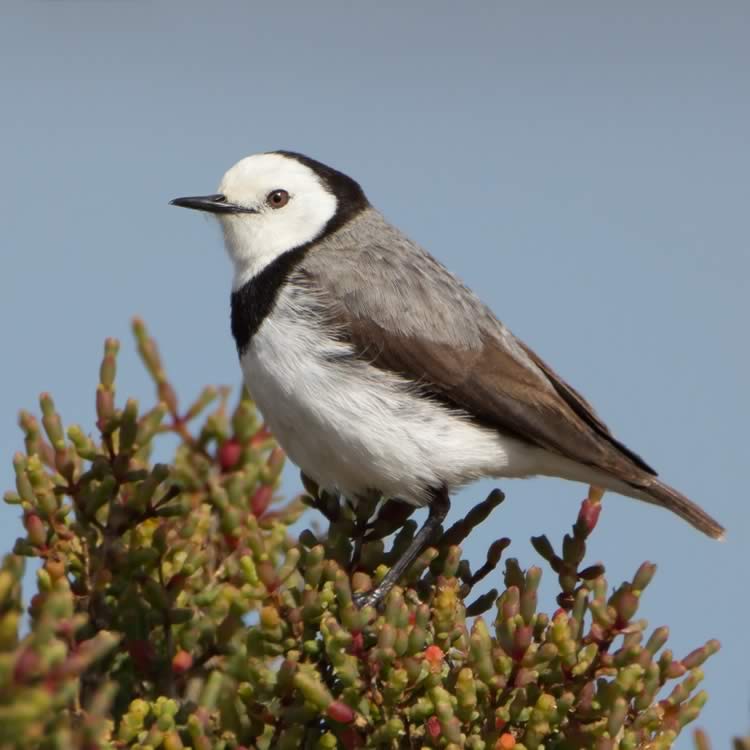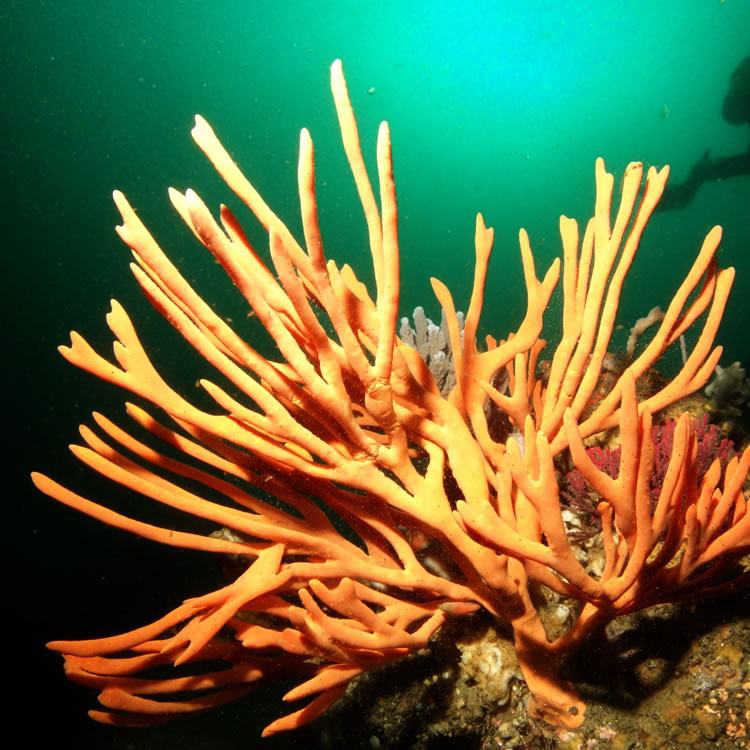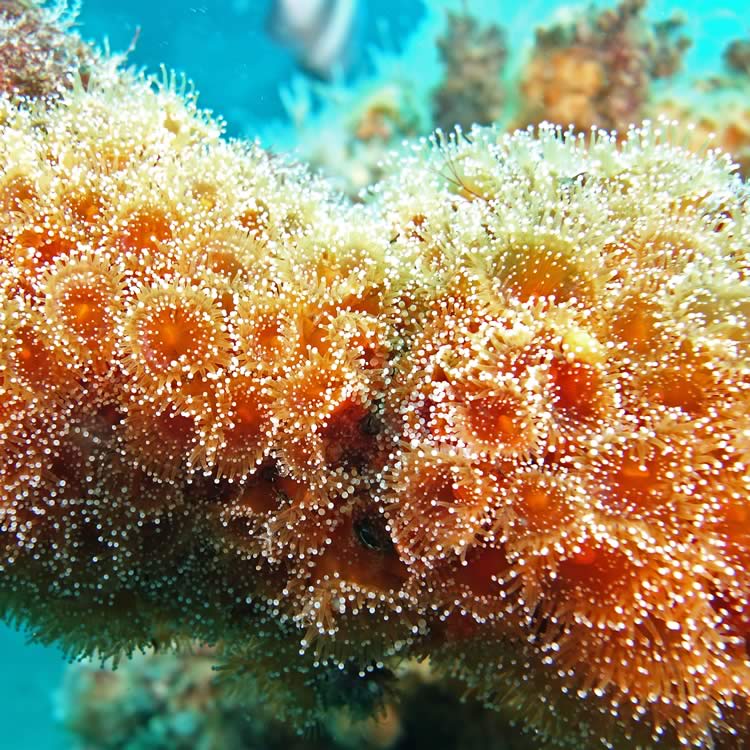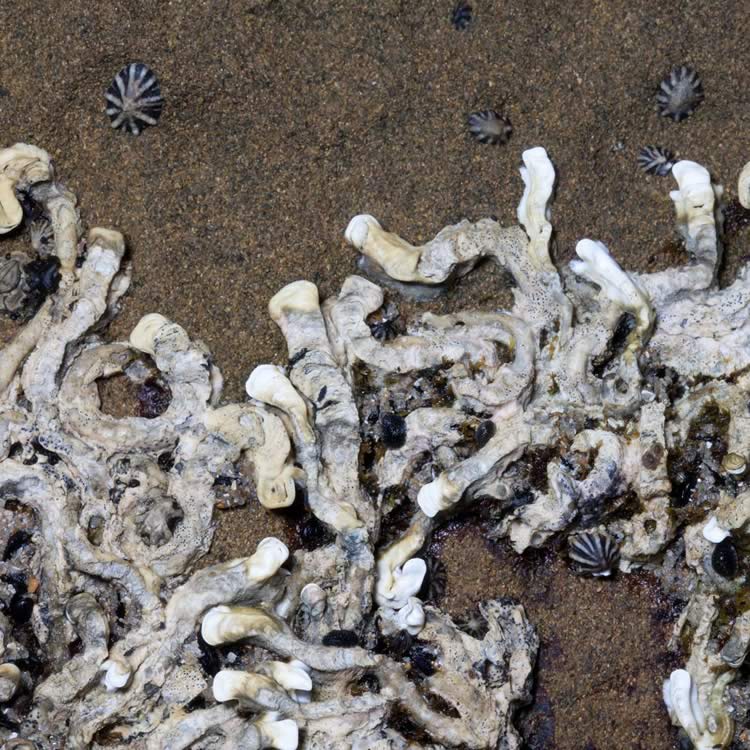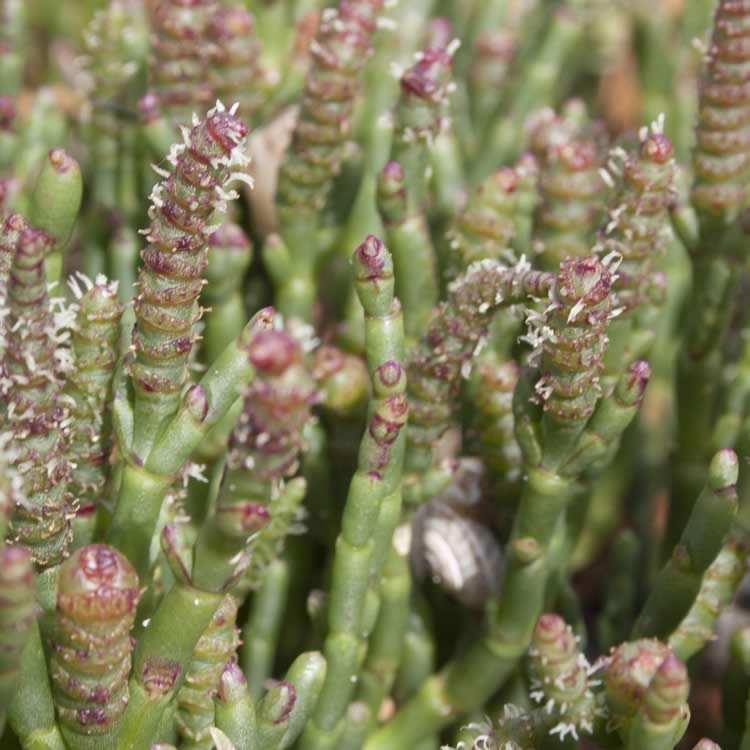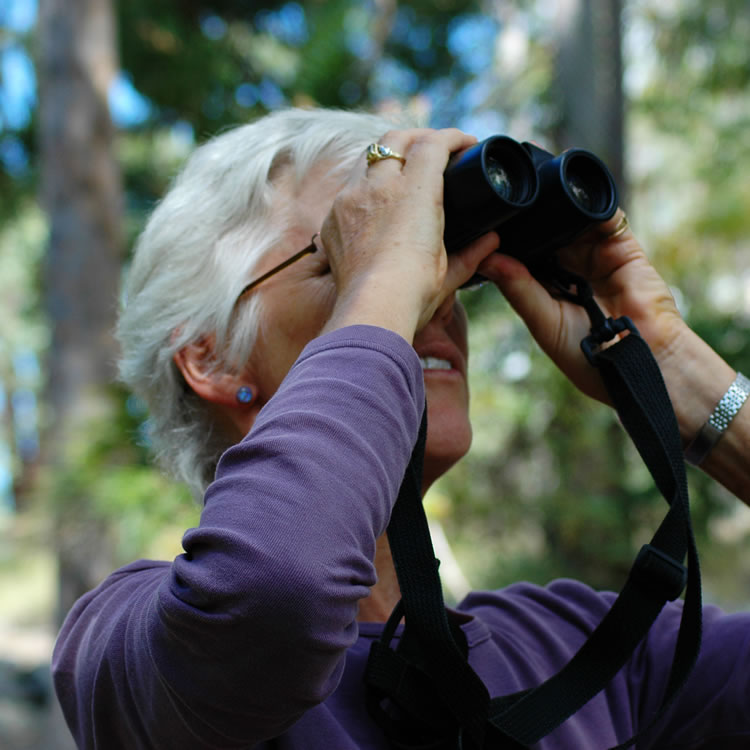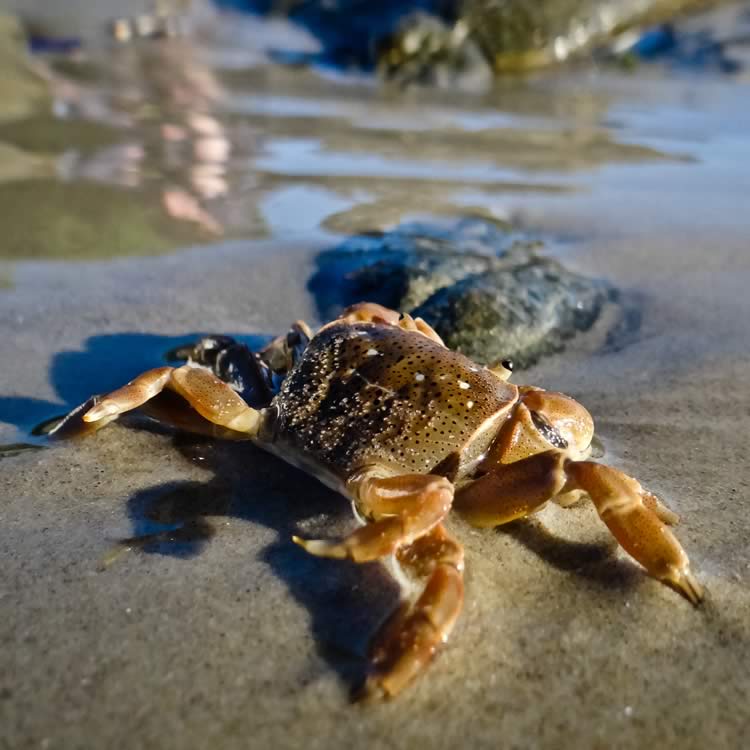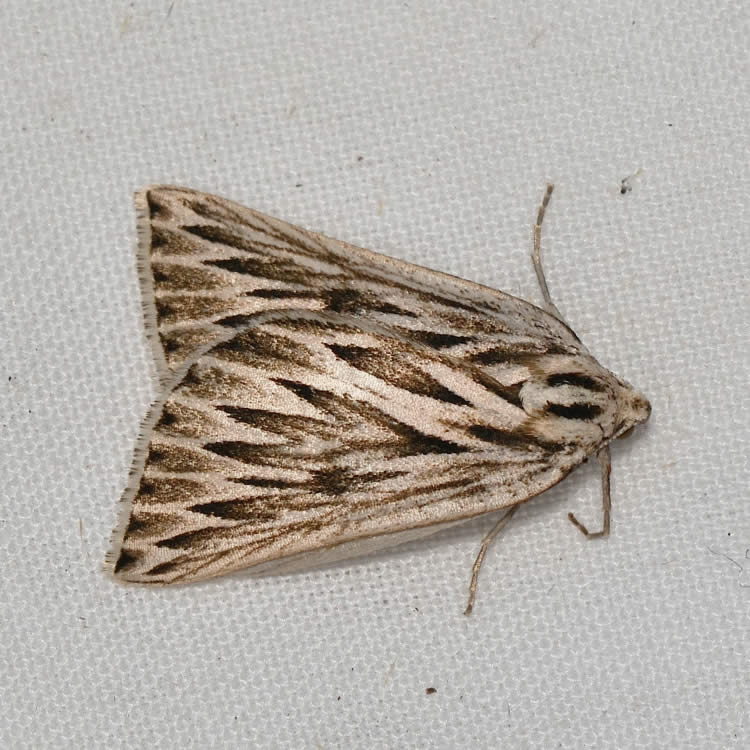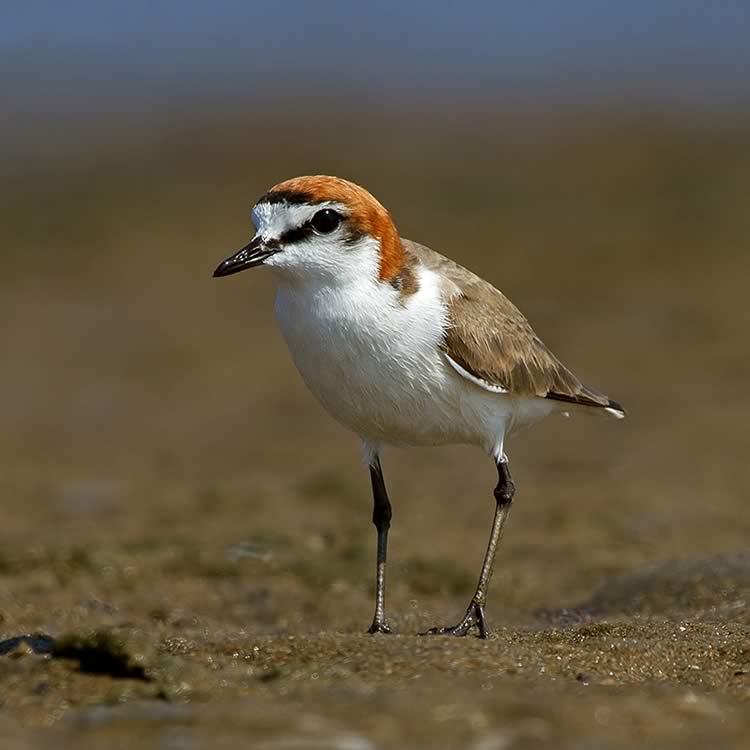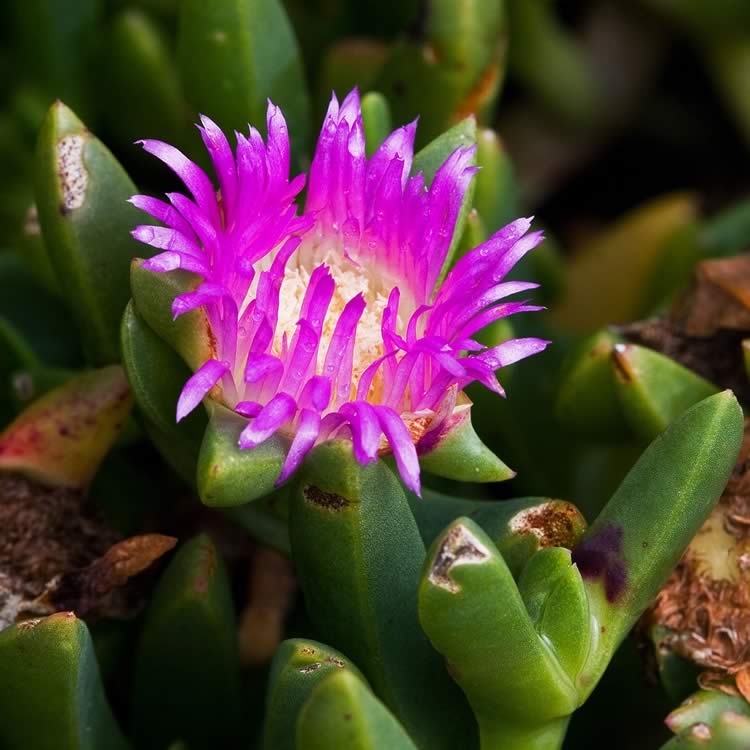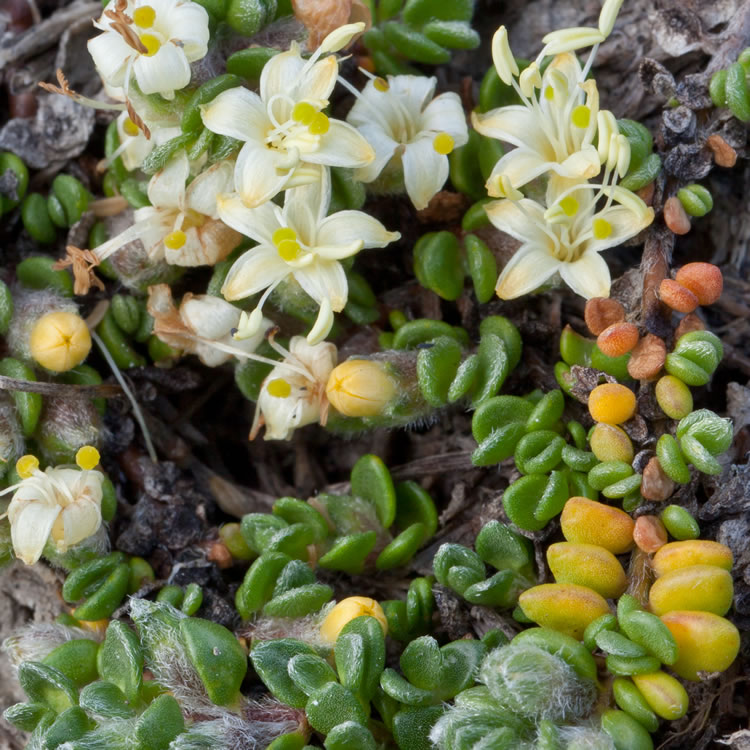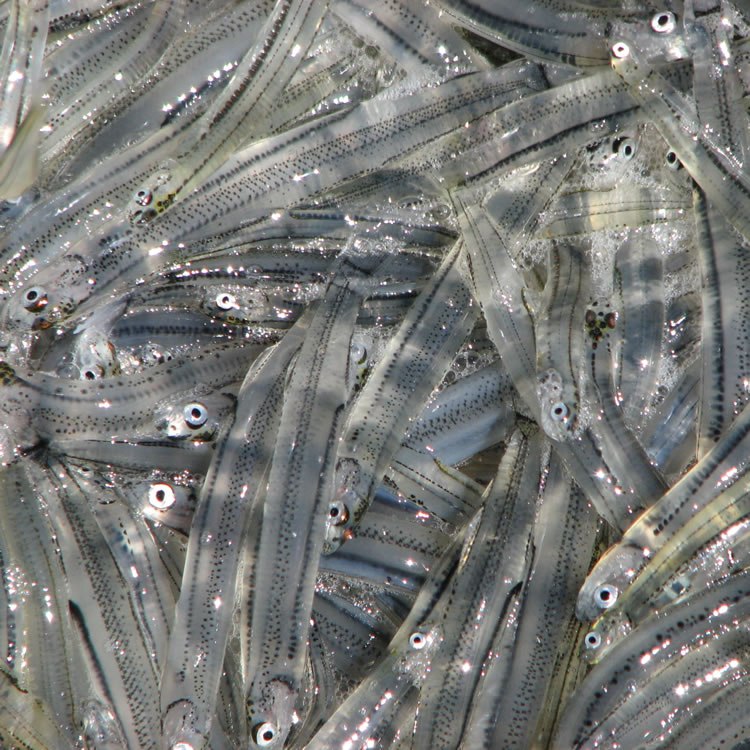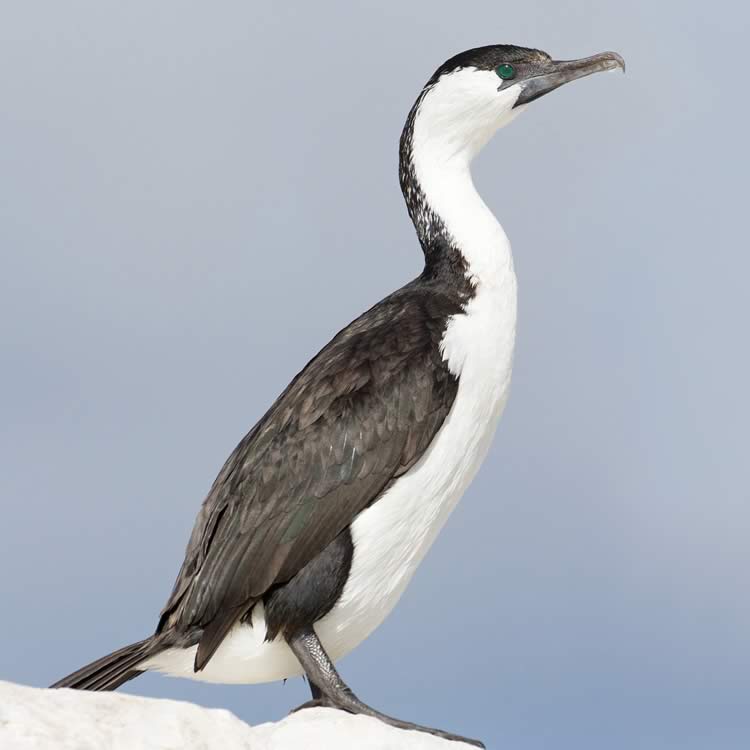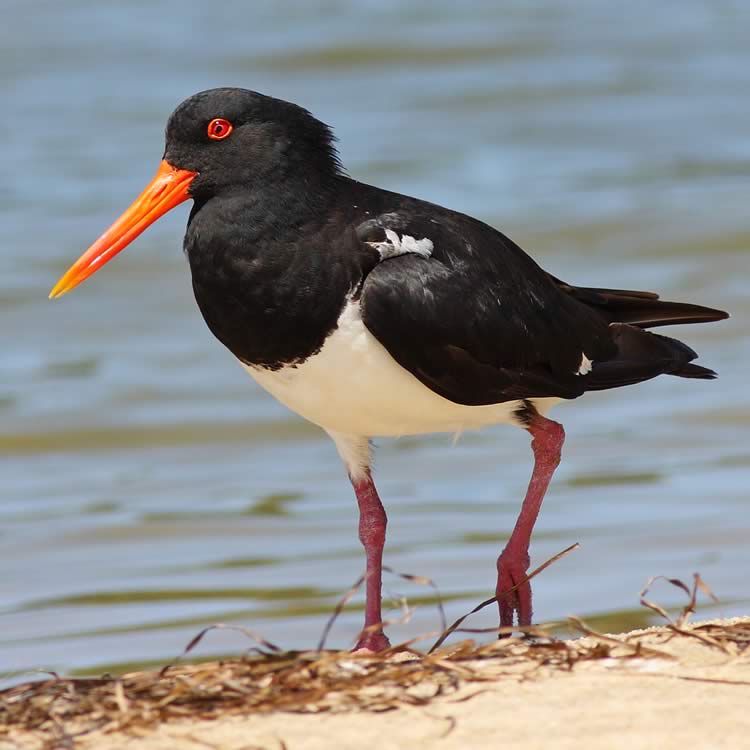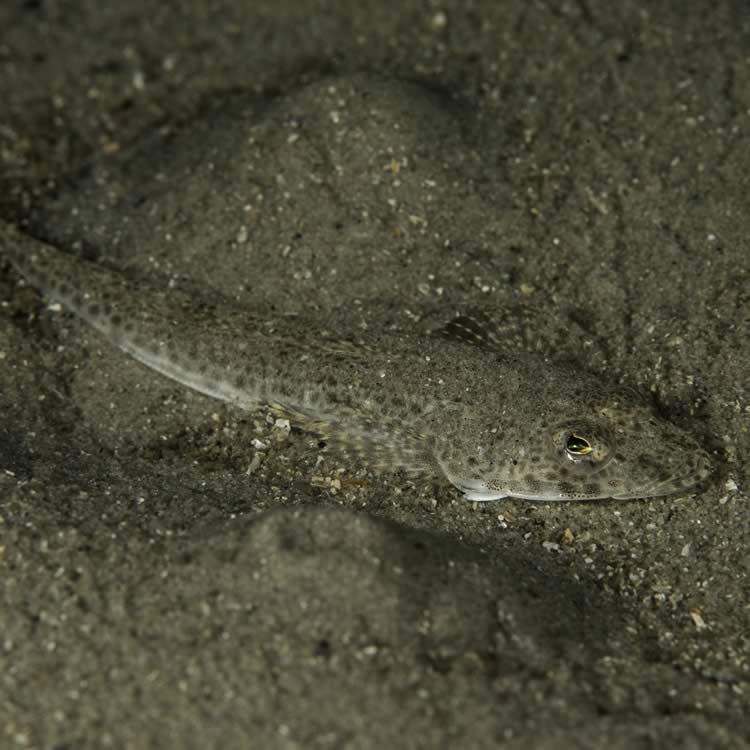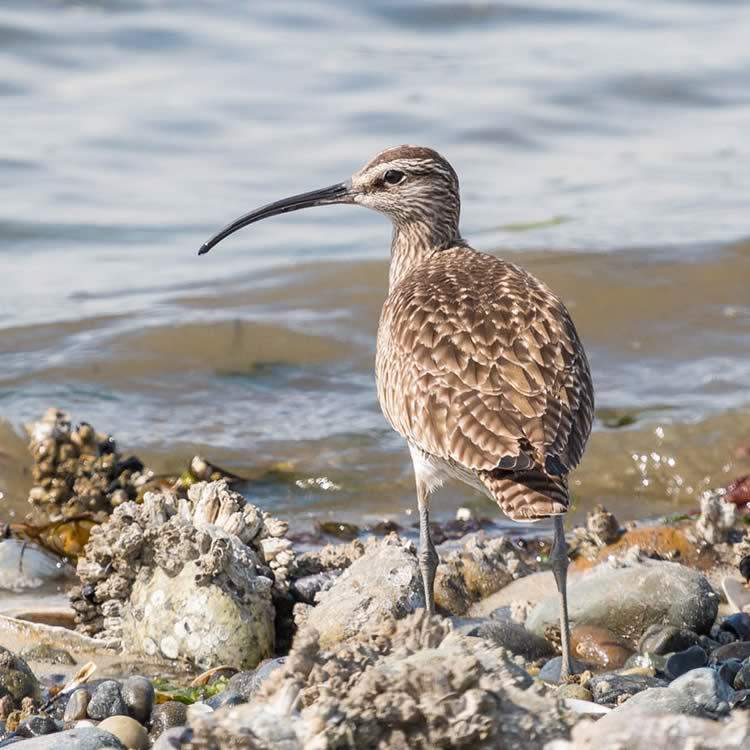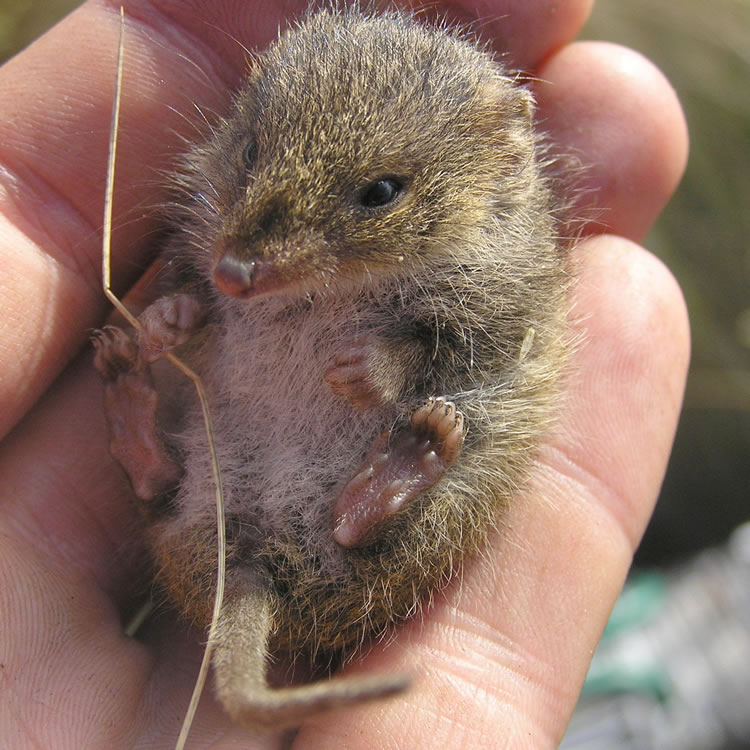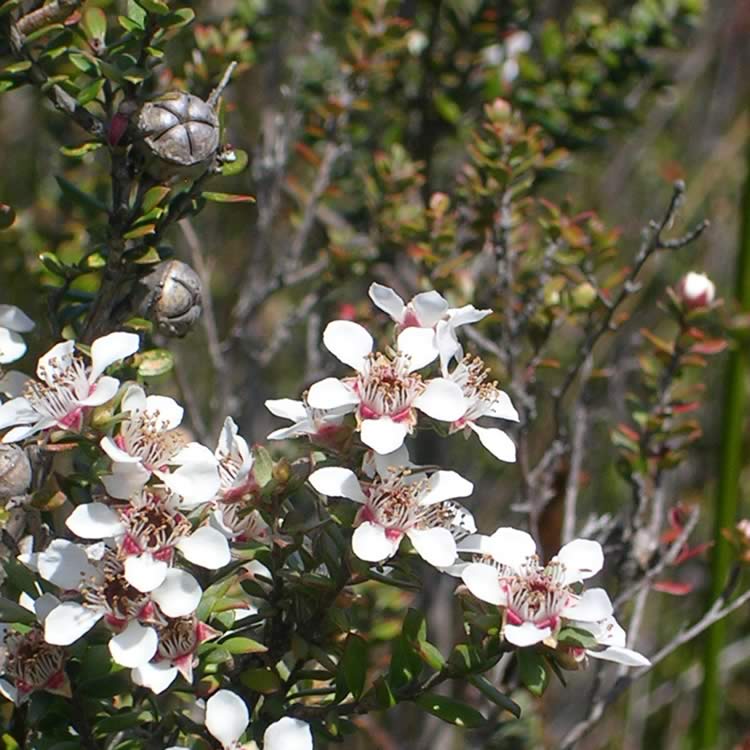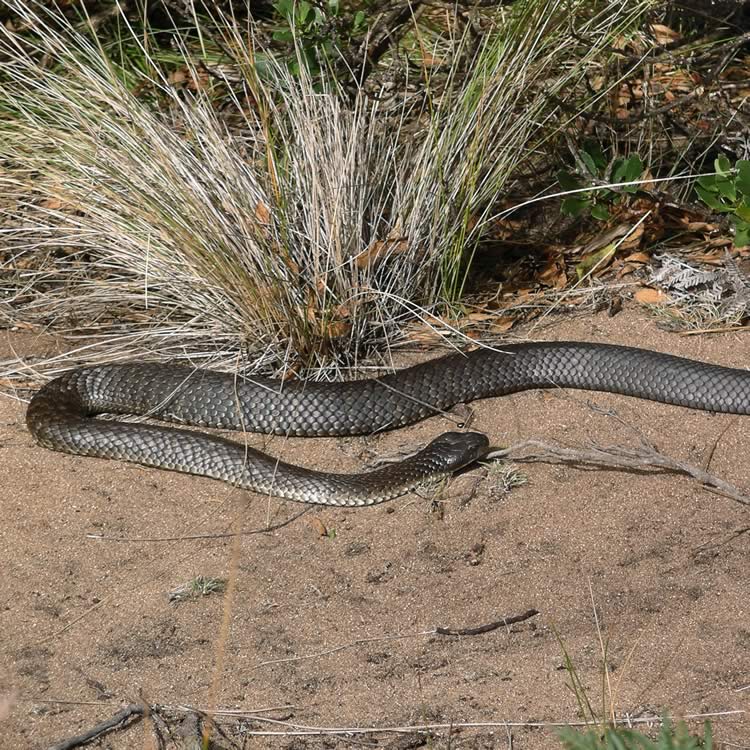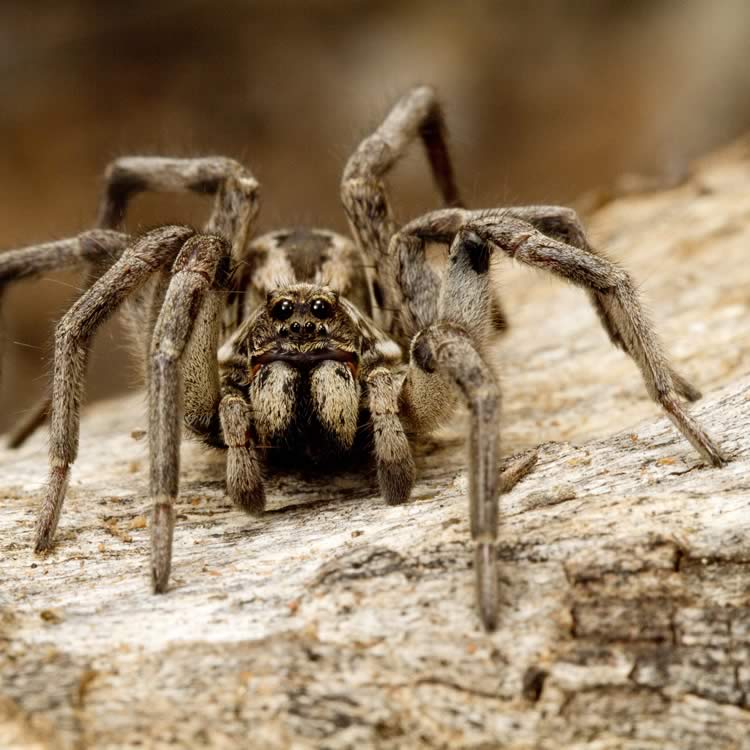Aquatic herbland
Benthic reefs organisms
In contrast to being sessile or fixed to the reef, motile organisms can move about on the reef or in the water column. Motile animals that stay on or close to the reef or seabed live in the benthic zone. The density and diversity of benthic reef organisms is largely influenced by the physical structure of the reef, which can vary from flat reef, to a complex system of boulders and crevices. More cracks and crevices mean an increase in the availability of shelter for animals, as well as increased surface area available to search for food. A diverse range of molluscs live on Derwent reefs, either grazing on algae from the surface of rocks (e.g, abalone, chiton), or preying on other reef animals (e.g., sea slugs, octopus). Echinoderms are spiny skinned benthic invertebrates that move around using hydraulic pressure from their tube feet (e.g., sea urchins, starfish, brittle stars, sea cucumbers and sea slugs). They can feed on dead plants and animals (detritivores), but many are also predators. Another highly diverse group of benthic reef animals are crustaceans. Common examples on Derwent reefs are the southern rock lobster, soldier crab, shrimp, and barnacle. A range of fish are also termed ‘benthic’ as they spend most of their lives resting and feeding on the bottom. Most live on soft sandy sediment (e.g., flathead, stinkfish, and flounder), but rays, skate and sharks often inhabit reefs. The draughtboard shark is a commonly sighted benthic fish on Derwent reefs.
Intertidal reef organisms
The rocky shoreline supports a community of intertidal reef organisms that are visible in rock pools, and on boulders and rock slabs at low tide. Algae and lichen plant communities often occur in prominent bands or zones of the foreshore. For example, rust coloured lichens are often found along the high tide mark, bright green sea lettuce occurs along the mid tide mark and macroalgae or seaweed such as Neptune’s Necklace often occurs in rock pools at the low tide mark. Characteristic bands occur as a result of the different physical conditions between the ‘splash zone’, ‘tidal zone’ and ‘low shore fringe’. The splash zone is above the high tide mark, where sea spray from waves wets the rocks and vegetation. The tidal zone is the area covered and uncovered by the tide twice a day, being further separated into the high tide, mid tide and low tide zones. The low shore fringe is where the waves break when the tide is at its lowest. In which zone an animal lives depends upon their ability to tolerate desiccation, immersion, and wave action. Mobile inter-tidal animals such as crabs, sea stars, turbo shells, and limpets, can move into rock pools or crevices during low tide to avoid drying out. However, many inter-tidal animals are ‘sessile’, meaning they fix themselves permanently to the rocky shoreline. This is a handy strategy to overcome wave action, but means these animals have had to develop ways of retaining water to keep their gills wet in order to breath during low tide. One of these special inter-tidal animals is the Critically Endangered Derwent River Seastar (Patiriella littoralis, previously known as Marginaster littoralis - see page 113 of the State of the Derwent estuary 2020 for more details of this rare species).
Pelagic reef organisms
The pelagic zone most commonly refers to the open ocean, but also includes the water column above reefs in shallow coastal areas. Pelagic reef organisms are those that swim just above the bottom or within the water column to the water’s surface. Rocky reefs are a hot spot for many pelagic fish, seabirds, and seals, attracted by an abundance of shelter and food such as algae, reef invertebrates, and other fish. Some pelagic fish are drawn to the shelter of reefs to breed, while they spend the remainder of their year in other habitats or in deeper waters. Other species live on reefs all year, and may hold territories for their entire lives (e.g., banded morwong, blue throated wrasse). Small fish utilise the caves and crevices of rocky habitats as refuge, while carnivorous fish species use this habitat as cover from which to ambush their prey. As hotspots for many fish species, reefs are commonly targeted by humans for fishing and the collection of specimens for the aquarium trade. Commercial and recreational fishing has depleted a number of fish stocks in the past, and nowadays fisheries are more closely regulated and managed. Blue throated wrasse and long-snouted boarfish are some reef highlights within the Derwent.
Reed swamp
Reef fish
Saline sedgeland/grassland
A range of salt tolerant grasses, sedges and tussocks also occur in saltmarshes either in distinct patches, or interspersed with succulent herblands or shrublands. This vegetation type is less salt tolerant, so generally occurs on higher ground, on mounds of shell grit and sand where tidal inundation is absent. This means that saline sedgeland/grassland commonly provides a buffer for saltmarshes, occurring along the fringes. The salt tolerant sedges Gahnia filum, and sea rush Juncus kraussii australiensis are dominant at the Lauderdale saltmarshes, and the coastal tussockgrass Poa poiformis is also common in this habitat.
Saline shrubland
Saline shrublands include a number of woody shrubs with salt tolerance capabilities, enabling them to cope with saline saltmarsh conditions. Bonsai-like in appearance the shrubby glasswort Tecticornia arbuscula, and Grey Saltbush Atriplex cinerea, growing to only 50–100 cm height, but be a few meters wide, creating a patchy distribution across saltmarshes. They are slow growing, with large bushes thought to be hundred years old. Being highly fragile they are easily damaged and slow to re-colonise after land clearing or disturbance. The salt tolerant shrub Austral Seablite Suaeda australis is also common in some areas, such as the Lauderdale saltmarsh.
Sessile reefs organisms
Below the low tide mark submerged rocky reefs of the Derwent estuary support an extensive range of sessile reef organisms that need to attach to the rocks to survive. Tropical reefs are usually dominated by coral, but in the cooler temperate waters of Tasmania most reefs are dominated by macroalgae (seaweed), or may contain a mix of coral, sponges, and macroalgae. A diverse range of green, brown and red microalgae occur on Derwent rocky reefs. Red algae are better at absorbing light so can live at greater depth, while brown algae occur in shallow waters. Green algae also occur in shallow waters as well as the intertidal zone. Rocky reefs also support a wide range of sessile animal. These include sponges and corals, which also occur in large aggregations or mixed species communities within Derwent rocky reefs. Other sessile invertebrates include barnacles, anemones, hydroids, bryozoans, sponges, tubeworms, and sea squirts.
Rocky reefs of the Derwent and other parts of south eastern Tasmania are famous for their communities of macroalgae such as kelp, which occur in large forests. Kelp forests harbour a wide variety of algae, invertebrates, fish and occasionally birds and mammals, while the sea floor beneath the algal canopy supports a high diversity of organisms such as sea urchins, molluscs, octopus, lobsters and abalone. Both herbivorous and carnivorous fish are abundant in kelp forests, feeding on small seaweeds and crustaceans from the rocky sea floor. Juvenile fish of many economically important species also shelter and feed under the canopy of kelp forests. Worryingly, these spectacular kelp forests are being lost at a rapid rate, and are threatened with local extinction.
Succulent herbland
Succulent herblands are dominated by a number of small to medium sized ground hugging herbs that grow in a thick carpet less than 20cm height. They are the most salt tolerant so generally occur in low lying areas of saltmarshes more frequently inundated by the tide. Succulence involves the storage of water in leaves to dilute the salt taken up from the soil, and has arisen independently in a range of different saltmarsh plant types. Within the Derwent estuary the most common flowering succulent herbs are pigface, wilsonias and samphire (also known as glasswort). Succulent herbs form a patchy mosaic with succulent shrubs, sedges, grasses and rushes. Multiple species of succulent herbs commonly grow together and form a dense multicoloured carpet.
Tidal flats
Tidal flats may appear lifeless, but they actually contain an incredibly diverse animal and plant community. The animals living here are often not seen at low tide, as they burrow into the mud for protection from predators like shorebirds and gulls. When inundated by the high tide crabs, snails, worms and molluscs come to the surface to filter sediment from the water, or feed on algae on the surface. The majority of animals live in the sediment, and process the sand and mud feeding on microscopic algae and other organic material. A diversity of shorebirds probe at the mud when it is exposed at low tide feeding on the diverse community of invertebrates. Tidal flats are also important feeding grounds for flounder, flathead, baitfish, and sharks when inundated at high tide. These fish more into shallow areas and either sift through the soft sediments, or feed on other plants and animals found here.




